
Tshering Denkar
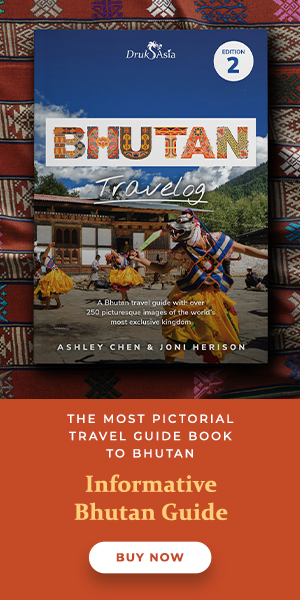
Domestic Tourism to boost Local Economy in Bhutan
Although Bhutanese have not seen tourists for the last few months, locals are riding the bandwagon of being "tourists in one's own community".
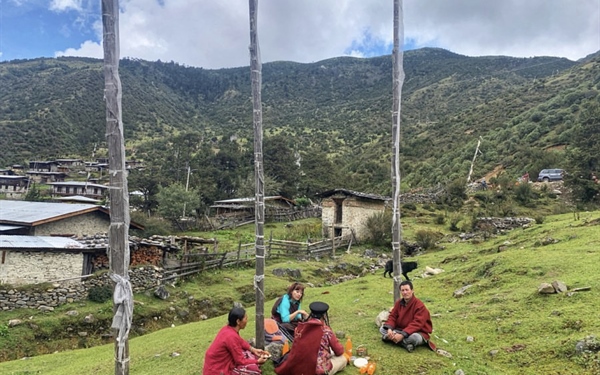
Tourism in Bhutan began in 1974 when western Bhutan was opened up to international visitors for the first time. Bhutan’s tourism has undergone a transformation since the 1990s. In 1990, the state monopoly ceased with the privatization of the tourism industry and the opening up of the tourism business to Bhutanese entrepreneurs. This move was designed to foster private sector development and at the same time attract much-needed revenue for the country’s economic development.
In light of its importance and potential, tourism was recognized as the key to private sector growth in Bhutan’s 9th Five Year Development Plan (2002-2007). However, to minimize negative impacts on the national socio-cultural and ecological heritage, the country adopted ecotourism as the national tourism strategy and decided to pursue a ‘high value, low impact’ policy.
During this rebooting time, they hope to restructure, redesign, reinforce, reskill, and revitalize our infrastructure, human resources, systems, services, cleanliness, and many other tourism facilities and services to make planning travel to Bhutan easier, in-country services and systems better organized and seamlessly delivered, and the in-country experience more exclusive.
With the tourism sector heavily hit by the COVID-19 pandemic, the Tourism Council of Bhutan (TCB) is working to restore the livelihood of those working in the sector and also to boost the local economy. The TCB officially permits domestic tourism through a notification a few days ago. Domestic tourism activities will be allowed with adherence to health and safety advisory to prevent and control the spread of COVID-19.
In domestic tourism, locals either individually or in a group will be allowed to travel within the country and carry out activities including trekking, hiking, rafting, hot spring and hot stone bath, swimming, horse riding, camping, pilgrimage, bird watching, cycling, helicopter ride, and others.
Although Bhutanese have not seen tourists for the last few months, locals are riding the bandwagon of being "tourists in one's own community". Hiking and Trekking have become some of the most anticipated getaway activities that many urbanities seek today. However, the council mandates individuals to carry out any activities related to travelling and trekking to abide by COVID-19 health and safety protocols.
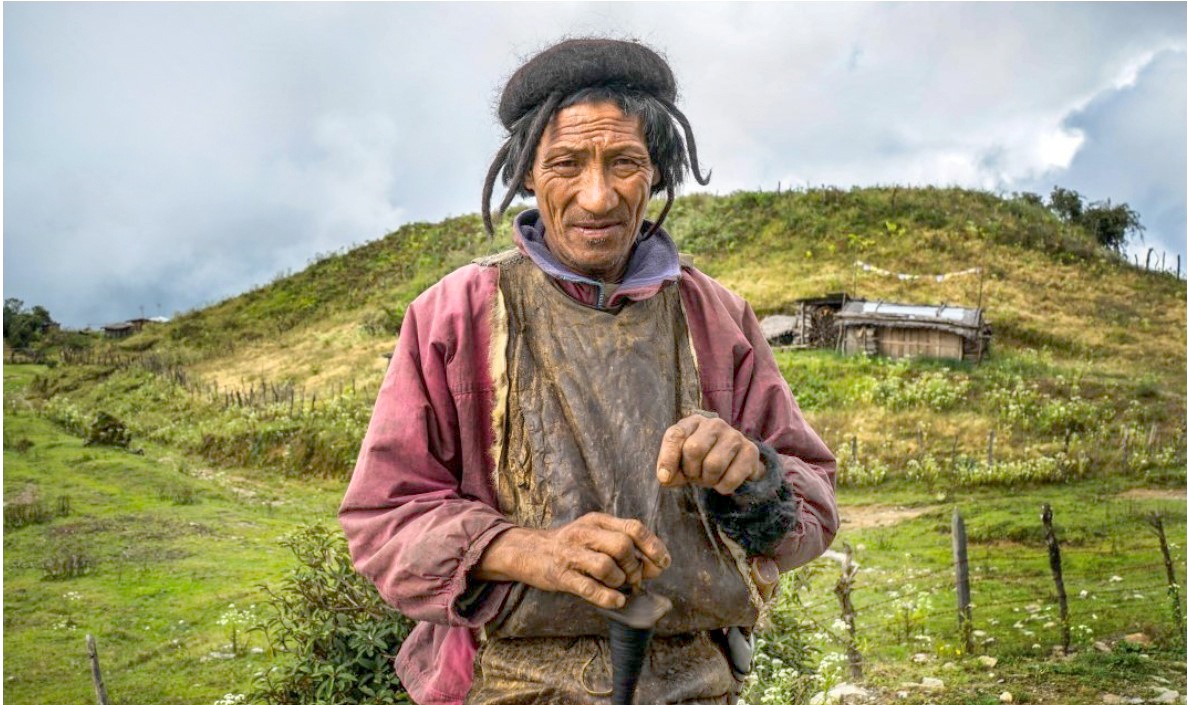
According to Dorji Dhradul, the Director-General of TCB he said, "We have started works on promoting domestic tourism pre-COVID but with the pandemic, it became even more urgent. Since we don’t have international tourists, we feel that at least locals travelling around would somehow give a boost to the local economy. We are working on this and in fact, it was already announced by the government but maybe a formal notification wasn’t issued and it is coming formally for the first time,”
In addition, TCB also mandates domestic tourists and tour operators to register with the council if the tour is beyond four nights and passes through communities, especially remote settlements.
And the council also limits the maximum number of people in a group to 15 people for both pilgrimage and trekking tours. The TCB, local governments and other relevant agencies will be monitoring to ensure that domestic tourism is conducted while keeping with the conditions and COVID-19 health and safety protocols at all times.
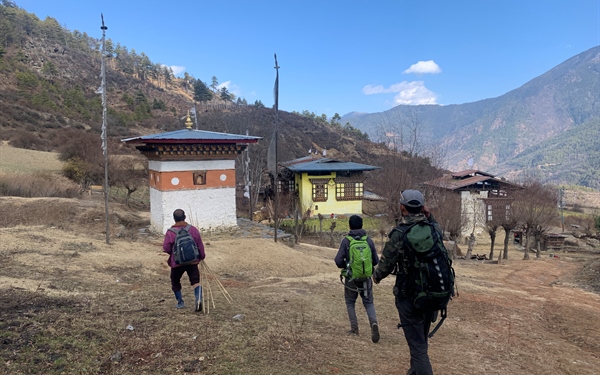
Upcoming Events
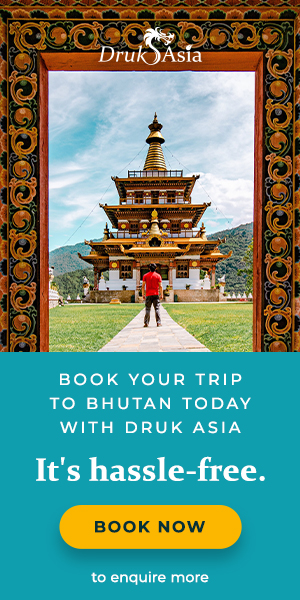
Related Posts
Alii palau airlines inaugural flight from singapore to palau via....
On November 23, 2023, Alii Palau Airlines made history with its inaugural flight to Palau.
Singapore to Palau: Alii Palau Airlines Launches Historic Route...
You can now visit the Palau Paradise directly from Singapore!
Bhutan's aviation pioneer: The story of Jamair and the early days...
In 1952, Bhutan initially proposed the establishment of a fully equipped aerodrome in Punakha and the acquisition of a...
A tale of two airports in Bhutan
As the slow pace towards a pre-pandemic world begins, two of the country’s domestic airports are going through their own...
What you need to know about birdwatching in Bhutan
The best seasons and locations for birdwatching in the Kingdom of Bhutan.
Bhutan revises its tourism policy to redefine High Value Low...
Visitors to Bhutan will now have to pay more than triple the previous Sustainable Development Fees (SDF).
Prime Minister Narendra Modi's Historic Visit to Bhutan: Strengthening Bonds and Building Partnerships
India's Prime Minister, Shri Narendra Modi, arrived at Paro Airport for a two-day State Visit to Bhutan from March 22nd to 23rd, 2024.
India-Bhutan Relations: Prime Minister Tshering Tobgay Official Visit to India
At the request of Prime Minister Shri Narendra Modi, Prime Minister of Bhutan H.E. Tshering Tobgay, accompanied by his wife H.E. Tashi Doma,...
Rifles and Rituals: Satire and Societal Shifts in Bhutan as Portrayed in 'The Monk and The Gun
Pawo Choyning Dorji, whose film "The Monk and the Gun" offers insight into the Himalayan nation's modernization process.
All You Need to Know About Gelephu Mindfulness City
The kingdom of Bhutan is planning to develop a "mindfulness city" covering about 2.5% of its land, which is larger than the size of...
Brand Bhutan: Karma Yangchen
Karma Yangchen, a distinguished artisan from Bhutan exemplifies a profound commitment to the art of handwoven textiles.
Brand Bhutan: Bhutan Herbal Tea
Bhutan Herbal Tea is the brainchild of two Bhutanese individuals who first crossed paths in New York during a Bhutanese New Year gathering...
Subscribe to our newsletter
Never miss out on new happenings and news stories!
Bhutan Cricket's New Milestone: The Inaugural Indoor Cricket Academy
The Bhutan Cricket Council Board (BCCB) inaugurated its inaugural indoor cricket academy on 20th December, with the objective of ensuring...
Paro FC Clinches Third Consecutive Victory in BOB Bhutan Premier League
Paro FC has once again claimed the BOB Bhutan Premier League championship, marking their third consecutive title victory during the season's...
Alii Palau Airlines Inaugural Flight From Singapore to Palau via Drukair
Singapore to palau: alii palau airlines launches historic route with drukair, chunipa losar: bhutan's timeless celebration of traditions and offerings.
Chunipa Losar is a day of offerings, a moment when communities come together to express gratitude, seek blessings, and strengthen bonds.
Bhutan's Time-Honored Tradition: Exploring the Nyilo Season and the Lolay Ritual
Approximately 750 children recently took part in the traditional practice known as "lolay" in Bhutan, marking the beginning of the Nyilo...
Download Daily Bhutan Mobile App
Connecting with us just got easier!

Everything you need to know to plan your trip to Bhutan

Sep 26, 2022 • 10 min read
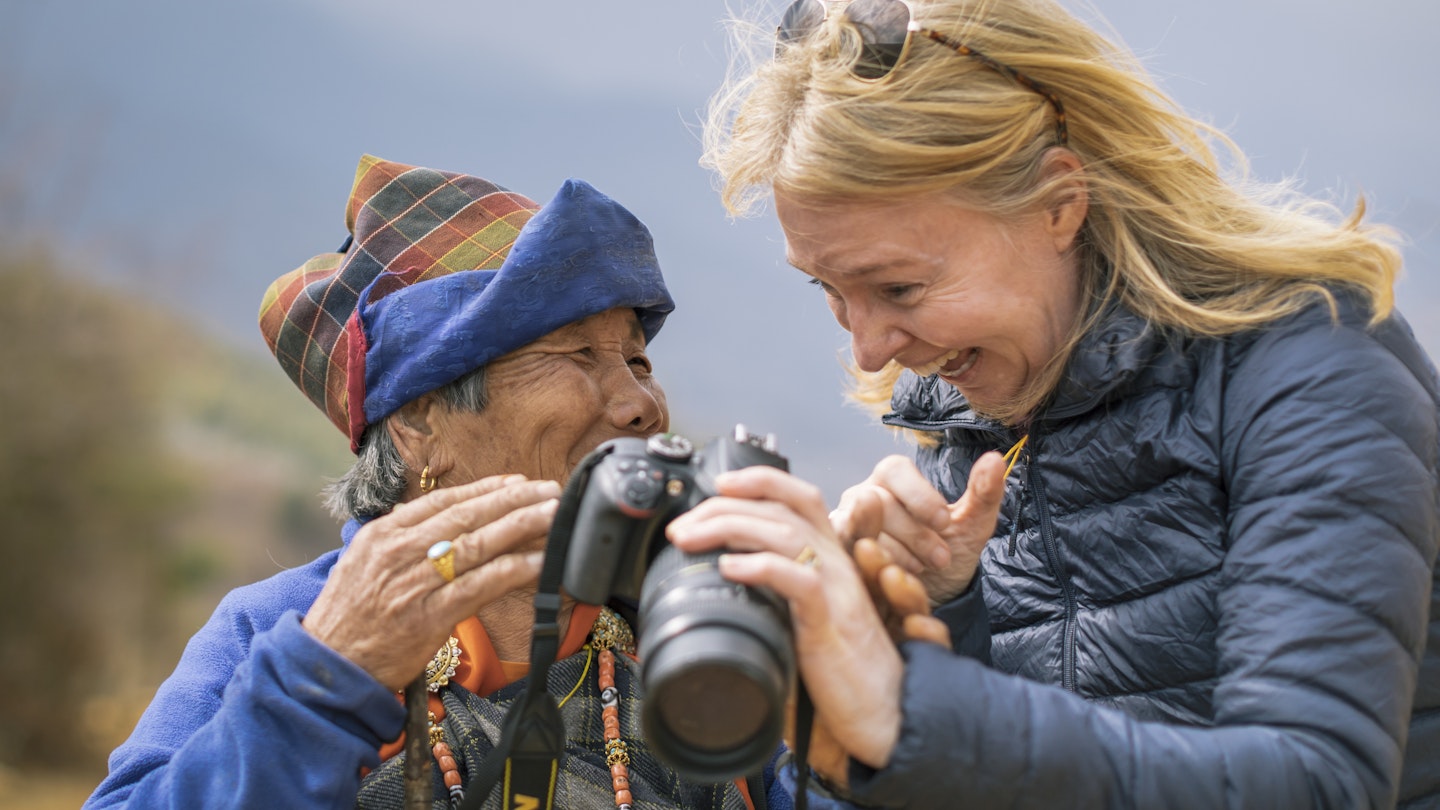
Visiting Bhutan's spectacular temples and villages is worth the price tag © Andrew Peacock / Getty Images / iStockphoto
Bhutan has long had a reputation as an exclusive, remote destination that only opens its doors to a lucky, well-heeled few. Its golden-roofed temples, magnificent fortress-like monasteries and timeless rural villages are as close to a Shangri-La as you can find in the modern world. Unfortunately, visiting paradise comes at a hefty price.
Bhutan’s tourism mantra has long been “high value, low impact,” and its aim is simple: to maximize the financial benefits of tourism while minimizing its environmental and cultural impact. It’s a perfect example of the country’s guiding policy of “Gross National Happiness.”
The country kept its doors locked tight during the Covid-19 pandemic and only reopened to tourism in September 2022, but with this reopening has come a major overhaul of the country's strict tourism regulations . If you are tempted to take the plunge on a once-in-a-lifetime visit to Bhutan , here’s the lowdown on Bhutan's new travel rules and exactly how to arrange a trip to this unique and magical Himalayan country.
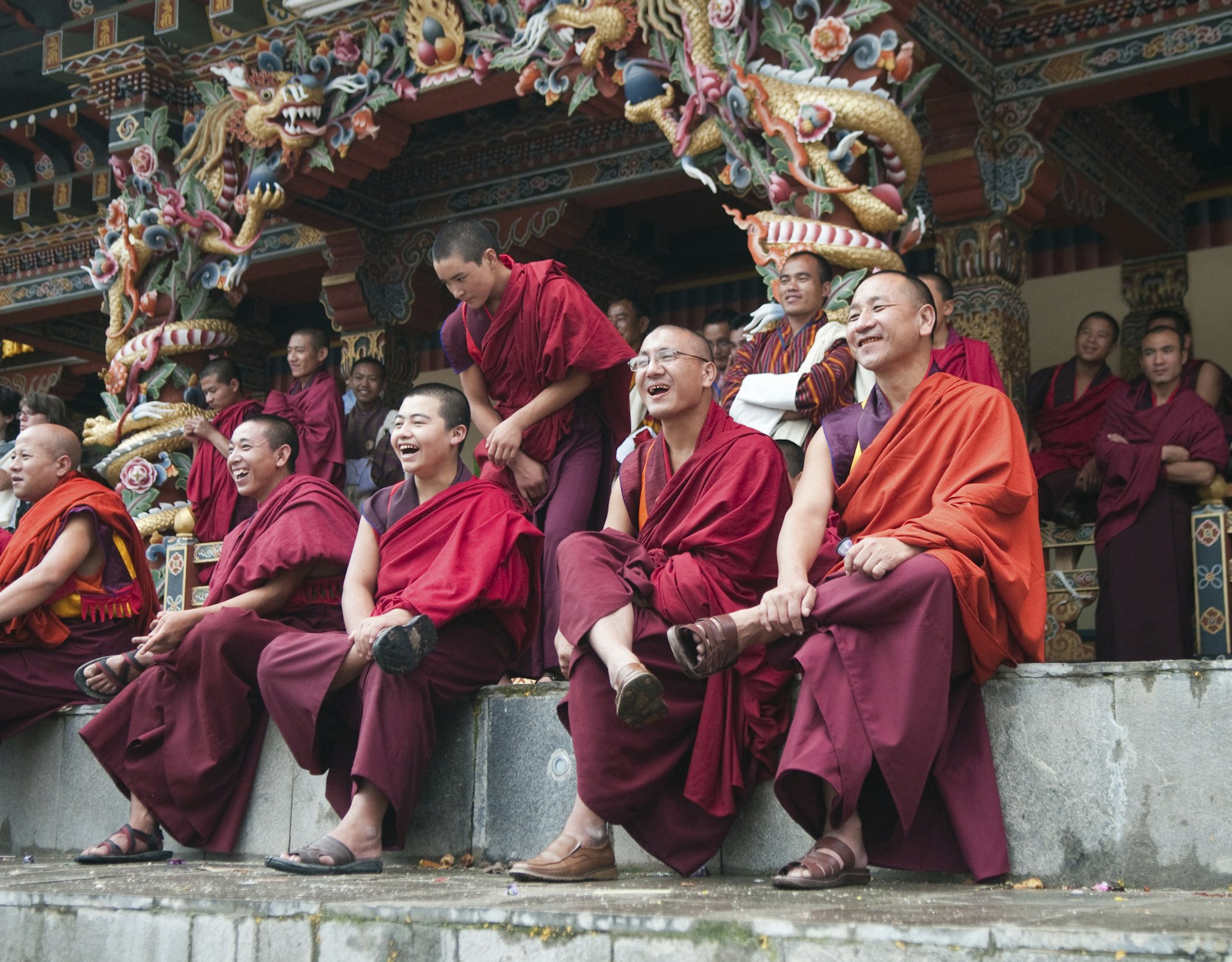
What are the new tourism rules?
Until 2020, foreign tourists were charged a flat minimum fee of US$250 per person per day for a fully organized tour, of which US$65 went to the government to help fund free education and healthcare for Bhutan’s citizens.
Beginning September 2022, foreign tourists are now charged a US$200 per person per day Sustainable Development Fee (SDF) that the government says will further contribute to sustainable tourism development, tourism training and carbon offsetting.
The other major change is that tour prices are no longer fixed, leaving tour companies free to charge what they want depending on the levels of service or activities, thus giving visitors some choice over things like hotel costs. The bad news is that travel costs are now in addition to the US$200 per day fee, not included. Comb through the small print, and you'll find that families get a small break, paying 50% of the SDF (i.e., US$100 per day) for kids aged six to twelve, and children under five being exempt from the fee entirely.
Another change is that foreign tourists now must pay entry fees to the main sights, ranging in price from Nu 2000 (US$25) for the famous Tiger's Nest Monastery to Nu 1000 (US$12.50) for most other popular temples and dzongs (fortress-like monasteries). This will add US$100-200 to most tours. Most of these religious sites will now close to tourists on popular Buddhist holidays, which is a shame as these are often the most colorful times to visit.
How Will This Change Tourism in Bhutan?
For starters, trips to already-exclusive Bhutan just became even more expensive. Given this, it’s likely that fewer foreign tourists will visit the country, and those that do will choose shorter trips close to the popular sights around Paro (Bhutan's international airport) and the capital Thimphu. Longer trips to the fascinating but more remote central and eastern regions now come with a much higher price tag, as does trekking, which is generally more expensive to arrange than a cultural tour.
For example, Bhutan's famous 27-day Snowman trek (often called the “world's hardest trek”) now costs at least US$3500 more per person than it did under the old rules. The hike’s fees could well make Nepal's equally unspoiled Himalayan regions, such as upper Dolpo and Mustang (which have their own fees of US$500 for ten days), more financially appealing.
What about regional Indian tourists?
The main exception to the new fee rule is Indian tourists, who pay a much smaller SDF fee of just Nu 1200 (US$15) per person per day. Indian visitors must pre-arrange a guide, hotel accommodation and permits to travel east of Thimphu. This can be arranged through a Bhutanese agent or independently.
Many Bhutanese travel agents point out that with Indian tourists making up 77% of annual visitors to Bhutan (243,000 out of a total 315,600) and many arriving in their own vehicles and cooking their own food on budget trips, it’s hard to see how Bhutan can justify its fee system in the name of either sustainable tourism or avoiding cultural impact.
How much does a trip to Bhutan cost now?
Including the US$200 SDF per person per day, most Bhutanese agencies will now charge between US$350 and US$450 per person per day for a fully inclusive tour, up from the previous US$250 per day. Trekking will likely be a bit pricier, and small groups of two or three will be more expensive than larger groups.
What the new rules do allow for is overnights in guest houses, heritage farmhouses or rural homestays, which are a bit cheaper than tourist hotels. Under the old rules, you paid the same daily rate regardless of whether you stayed in a comfortable four-star hotel or on the floor of a local homestay, which limited the appeal of community tourism. Now you pay for what you get. The downside is that even if you stay in a simple rural homestay, you will still pay around US$300 per day for your trip, leaving you with budget travel at a top-end price.
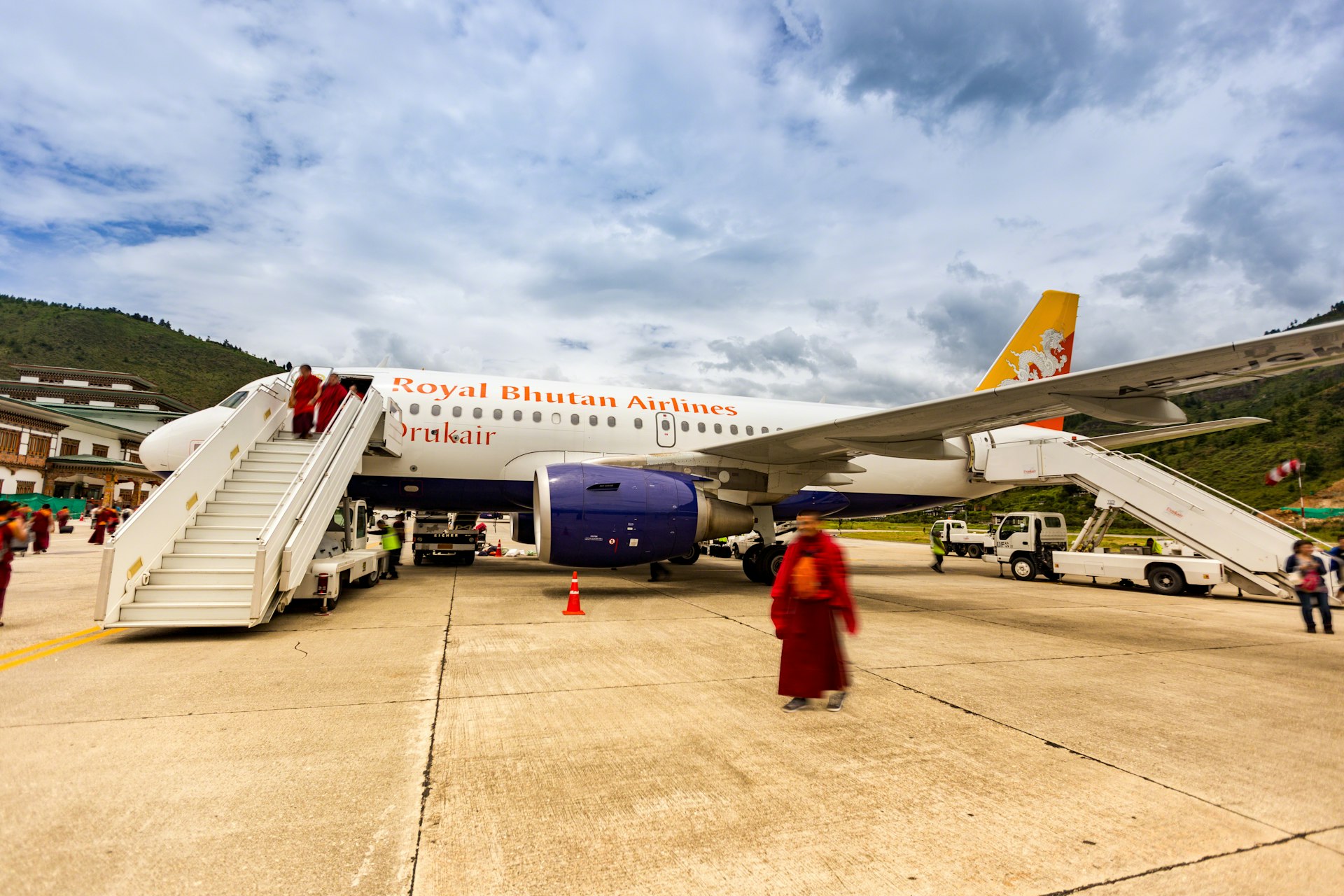
How to plan your trip
Until 2022, tourists had to arrange their travels through a registered Bhutanese travel agent. Now tourists are allowed to book trips directly with hotels, so if you are just planning a visit to Thimphu and Paro towns, you can theoretically just book a hotel, a guide and a couple of airport transfers directly with a hotel, cutting down on transportation costs.
For a more complicated itinerary involving multiple overnight stops, cultural programs, day hikes, trekking and other activities, you are still better off booking with an experienced agency. Bhutanese tourism infrastructure isn't yet developed enough to offer easily bookable separate transportation and guide services.
Start planning early. You will need at least a month to pin down your itinerary, pay the tour operator and get your visa approval. If you are visiting in the high season months of October, November, March and April, you will want to book your flights to Bhutan further in advance.
Planning your itinerary
Because Bhutan is expensive, many travelers are tempted to limit their visit to just a few days around the Paro Valley. There are definitely some fabulous medieval temples, monasteries and museums here, as well as some intriguing sights in nearby Thimphu, where the 16th and 21st centuries manage to coexist seamlessly.
Stick to these easily accessible sights, however, and you'll only see the most touristed parts of Bhutan. With a few more days, you can visit the delightful valley of Punakha or stay overnight in the little-visited valley of Haa, accessible from Paro over the country's highest motorable pass. Anyone wanting to really get off the beaten track should head out to the center or east of the country.
Perhaps the best way to plan your trip is to use an agency’s itinerary as a starting point and modify it to your interests. If you have a specific interest in embroidery, hiking or Buddhism, a good agency will adapt the tour to your preferences. This is also the time to mention any extras, such as a traditional hot-stone bath, an overnight in a rural homestay or a day of rafting or mountain biking. Be sure to time your visit with one of Bhutan’s fabulous festivals.
We always recommend throwing in a few lesser-visited temples and day hikes to get you off the tourist circuit. Even with a limited amount of time, you can detour to a lesser-known temple, nunnery or hermitage to experience Bhutan at its most authentic.
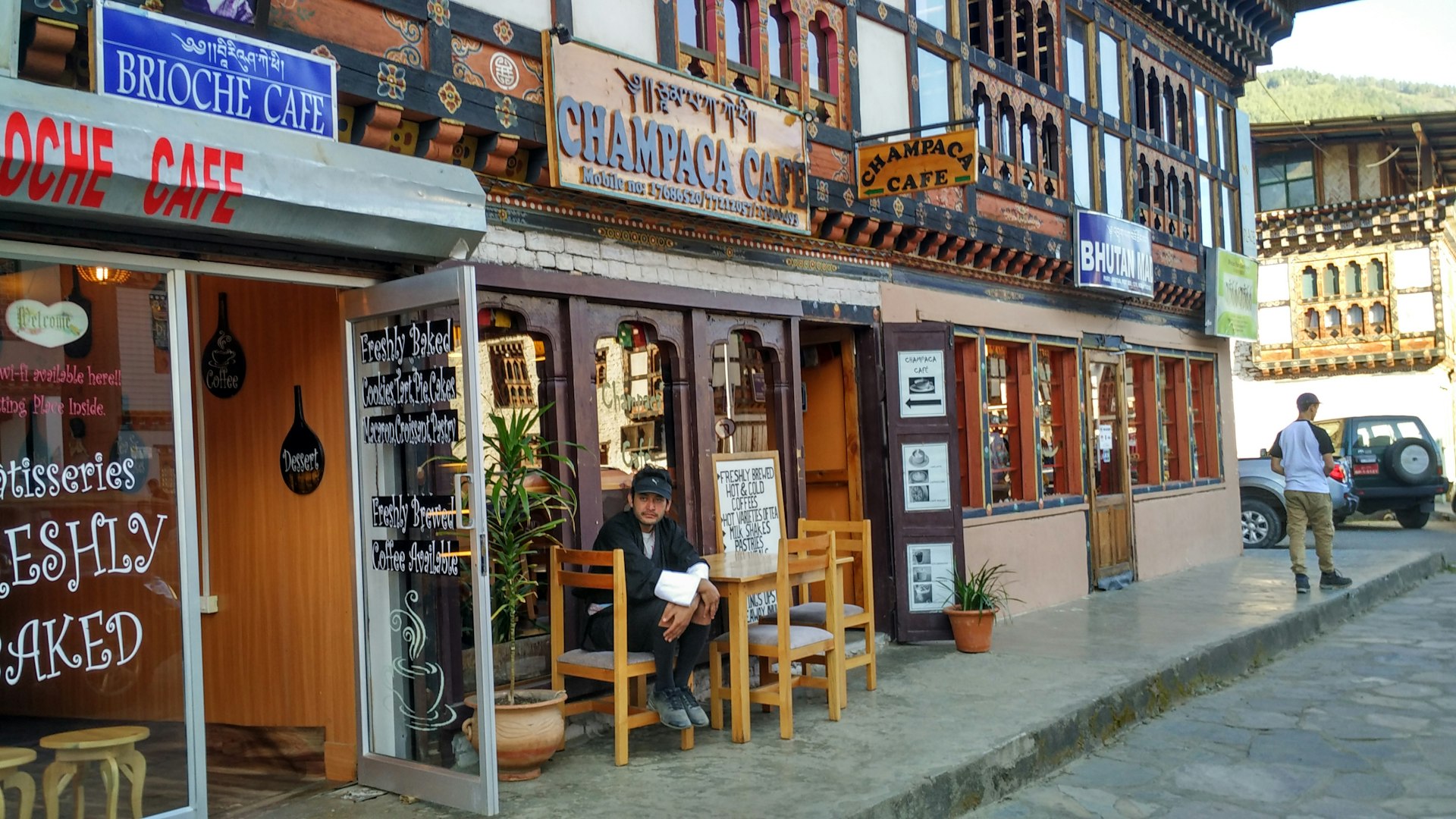
Not to miss places in Bhutan
Taktshang goemba.
Hike up to Bhutan's most iconic temple, the Tiger's Nest Monastery , whose medieval shrines are said to be attached to the cliff face by the hairs of angels.
Punakha Dzong
Bhutan's most beautiful fortress is lined with purple jacaranda flowers in spring and hosts several of Bhutan’s most spectacular festivals.
Bhutan's capital is home to historically important monasteries, protector deities, a takin reserve, archery tournaments, a fabulous weekend market and the magnificent former seat of government at Tashi Choe Dzong .
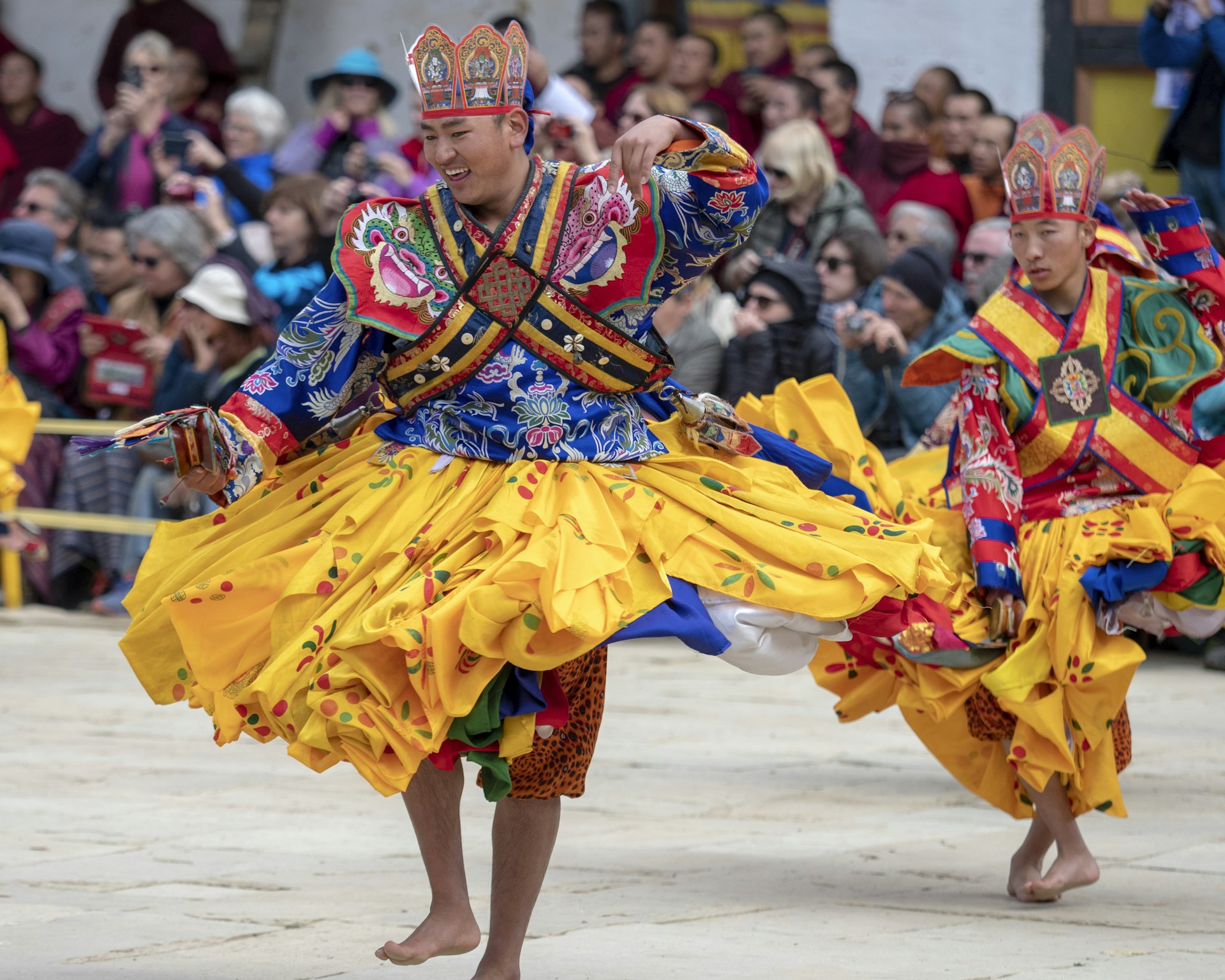
Top Bhutanese experiences
Attend a tsechu (religious dance festival).
Almost every dzong or temple in Bhutan has an annual festival featuring sacred monk dances, colorful costumes and local fairs. The main ones in Thimphu and Paro are a highlight of the Bhutanese year, but it's also worth seeking out a lesser-visited event.
Explore Bhutan on foot
Even a short walk in Bhutan leads up to a sacred meditation center, a Buddhist pilgrimage site or through ancient forests of blooming rhododendrons. It's easily the best way to experience the country's pristine rural charm. For an overnight trip, try the Bumdrak trek, which takes you on a back-door hiking route to the famous Taktshang Monastery.
Relax in a traditional hot stone bath
Soaking in a traditional Bhutanese wooden bathtub in water heated by medicinal hot stones and fragranced with mountain herbs is simply the perfect way to end a long day of sightseeing.
Best time to visit
The best months to visit Bhutan are March/April – for warm temperatures and stunning rhododendron blooms – and October/November – for clear Himalayan views and the most popular festivals.
Now that there are no longer discounts for off-season travel, there's little incentive to visit in the cold winter (December to February) or wet monsoon months (June to September).

How long should I spend in Bhutan?
As long as you can afford it without raiding your kids’ college fund! With a four-day trip, you could see the highlights of the Paro Valley and the quirky capital Thimphu. If you have a week, you can continue over the Dochu-la mountain pass into the charming Punakha Valley.
To get to the central Bumthang Valley or the fascinating but remote far east, you will need a couple of weeks, though a domestic flight from Thimphu can speed things up here.
The bottom line is that you will likely only make one trip to Bhutan in your lifetime, so be sure to make the most of it.
How to get a Bhutan visa
Once you’ve agreed on your itinerary and tour price, the next step is to pay your agency (most likely via a bank transfer) to the agency's account at the Bhutan National Bank. If you are lucky, this will only involve one visit to your bank. Be prepared to explain where Bhutan is.
Once the wire has gone through, you will fill out a visa form and send your agency a digital photograph and scan of your passport photo page. Getting a visa is just a formality, and the agency will email you a copy of your visa authorization after a few days. The visa costs US$40 and will likely have been included in your tour price.
If arranging things yourself, you will have to pay the SDF fee directly to the government and apply for your visa through the Department of Immigration , though the exact process for this hasn't yet been revealed.
On arrival at Paro airport or at the land border with India, you will simply present your visa authorization, and immigration will stamp the visa into your passport.
How to get to Bhutan
Most visitors fly into Bhutan's Paro airport from Delhi , Bangkok or Kathmandu on the national airline Druk Air. It’s essential to print out a copy of your visa authorization before check-in.
With the reopening of tourism in September 2022, foreign tourists can once again enter Bhutan overland through one of three border crossings with India. In reality, the crossing to Phuentsholing is the only one that sees much tourist traffic, mainly with adventurous travelers combining Bhutan with the sights of nearby Darjeeling or Assam .
This article was first published June 2019 and updated September 2022
Explore related stories
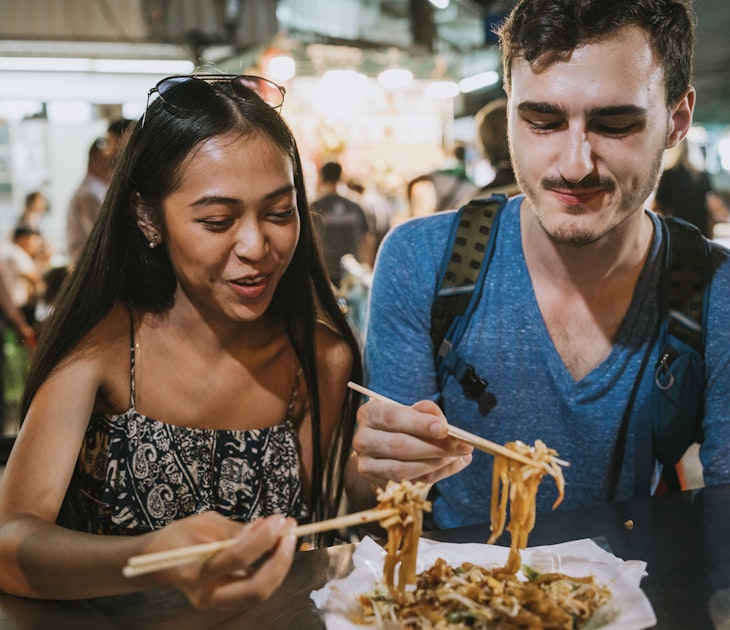
Tips & Advice
Feb 23, 2024 • 7 min read
Complement your trip to Thailand with the dishes and drinks that show off the country’s legendary culinary heritage.
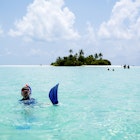
Feb 22, 2024 • 5 min read
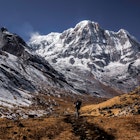
Feb 22, 2024 • 3 min read
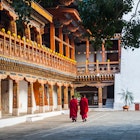
Feb 2, 2024 • 15 min read
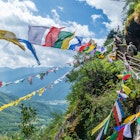
Jan 28, 2024 • 7 min read
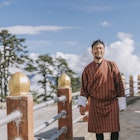
Jan 17, 2024 • 6 min read

Jan 17, 2024 • 8 min read
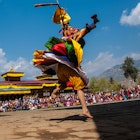
Jan 16, 2024 • 5 min read

Jan 5, 2024 • 20 min read
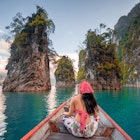
Jan 3, 2024 • 5 min read
- Business & New Markets
- The Good News
- Global Health

Tourism in Bhutan and COVID-19’s Lasting Impacts
THIMPU, Bhutan — The Kingdom of Bhutan is a small country landlocked between India and China. The country is well known for its Gross National Happiness Index and for being the only carbon-negative economy in the world. Bhutan has preserved both its culture and natural habitat throughout the rapidly globalized times. As a country that greatly limits outside influence, tourism in Bhutan has become both an economic boon and a bane.
COVID-19 in Bhutan
Bhutan’s economy, covid-19’s economic impacts, domestic tourism in bhutan, related posts, living wage in colombia’s banana industry, digital fish farming: market opportunities for kenyan fish farmers, fairafric: a new approach to poverty in ghana’s cocoa industry.
Comments are closed.
Type above and press Enter to search. Press Esc to cancel.

Fortifying Friendship
འབྲུག་དང་རྒྱ་གར་རྒྱལ་ཁབགཉིས་ཀྱིས་ མཉམ་འབྲེལ་གྱི་ཐོག་ཡར་རྒྱས་གོང་འཕེལ་གྱི་གནས་ཚད་གསརཔ་བཟོ་དོ་ཡོདཔ།, pm modi and bhutan, remembering indian pm’s visits of 2014 and 2019, trending now.

Exploring domestic tourism market amid Covid-19
- July 29, 2020
- No Comments
With the coronavirus pandemic causing the closure of national borders and the suspension of international travel, the government is exploring ways to boost domestic tourism.
Although domestic tourism has not picked up much so far, its importance and potential has been recognized for quite some time now. In fact, domestic tourism is an important component of the ongoing tourism flagship program and it is also featured in the draft tourism policy that is waiting to be approved within this month.
The Tourism Council of Bhutan (TCB) in their effort to promote and encourage domestic tourism during the pandemic have sought expression of interest to promote domestic tourism from industry partners and about 80 have already registered.
In an interview with Business Bhutan, Dorji Dhradhul, Director General of TCB said that a workshop will be conducted soon to discuss and identify potential tourism products and places and to understand the support required by private partners. “With this we hope that we can increase the scale of domestic tourism and help kick-start tourism industry,” he said.
“Though domestic tourism alone may not be able to kick-start the whole tourism economy in full strength, it should be able to help keep alive some tourism businesses. But it is quite certain that its contribution to the nation’s economy will gradually increase over time,” said the DG.
DG also elaborated that they see an opportunity in popularizing domestic tourism products such as visit the 20 Dzongkhags, pilgrimage, meditation, nature (trekking and camping), rafting, culture (festivals), meetings/workshops/conferences, and others.
For example, a new product called “Druk Neykhor” or “Bhutan Pilgrimage” is being developed. Druk Neykhor intends to cover 108 must-visit sacred sites/monuments in the 20 Dzongkhags, wherein a participating tourist/pilgrim will own a “stamp book” designed in a traditional “scripture” style and get it stamped with the seal of that site/monument as a reward (proof) of the visit. It will be the aim of the tourist or pilgrim to visit all these 108 sites/monuments over a period of time. “We hope to launch this product with 16 sites/monuments in Thimphu Dzongkhag,” added the DG.
As an important input towards this objective of promoting and developing domestic tourism, TCB have just finalized and published a report (www.tourism.gov.bt) on the first-ever nationwide survey on Domestic and Outbound Tourism conducted in 2019.
The study reports that a total of 765,000 domestic overnight trips were undertaken with an average four trips in 2019. Majority of the overnight trips have taken place for ‘visiting friends & relatives’ (31.53%), followed by ‘health and medical care’ with 17.95%, ‘holiday leisure’ with 12.9%, and ‘religion / pilgrim’ with 12.47%, amongst others.
Meanwhile, TCB’s role is to provide all necessary support in terms of policy, procedures, regulations, standards and services, expertise, and coordination among different stakeholders; funding and marketing and promotion of different domestic tourism products.
TCB does not have a system to collect information formally in the national accounting but as part of the Domestic and Outbound Survey, TCB estimated a total of Nu.7bn for domestic tourism expenditure in 2019 of which Nu. 5.9bn was for overnight expenditure and Nu. 1.1bn for excursion expenditure.
Although domestic tourism will undoubtedly offer some relief to emerging economies that have suffered under the virus lockdown, it is unlikely to fully compensate for the losses incurred from international travel restrictions.
Meanwhile a tour operator, Karma Lhamo who recently ventured into domestic tourism said domestic tourism especially Neykor and hiking to the beautiful lakes have picked up these days. Every day there are five to seven groups and on weekends, “it is even more at Tango University of Buddhist Studies.”
Karma Lhamo said Bhutan has many sacred sites to be visited. “The cultural diversity within the country and rich flora and fauna in different districts will always offer scope for domestic tourism. Domestic tourism if taken professionally will help boost our economy. We should remember, everywhere in the world, eventually it’s domestic tourism that sustains the tourism industry, so should it be in Bhutan,” she added.
She also shared that she works in a travel agent which does both inbound and out bound tours, especially neykor programs but her office is yet to start domestic tours. “We want to make it professional and right now we are working on the Neykor packages to eastern Bhutan. Anyone could organize it but in order to sustain, professionalism is must. We will come up with the best packages to suit our diverse clients. I have been doing most neykors and hikings amid the pandemic with my friends,” she said.
Meanwhile she also said that TCB should help to make domestic tourism professional. “Looking at the current trends, any one could organize this kind of tours and there is no need of a travel license. Like inbound tours, TCB should make it compulsory for the organizers to have at least the travel license and transparency and accountability should be put in place,” she added.
pic courtesy: facebook
Chencho Dema from Thimphu
Stay Connected
Latest news.

Advertisement

The country’s first and the only financial newspaper, Business Bhutan Private Limited, was conceived on June 1, 2009 and officially launched on September 26 the same year.
02-339904 & 02-339906, 17994447(Marketing), 17975243 (Editorial) & 17968802 (Circulation)
Other Links

The website upgradation is part of Bhutan Media Foundation's project supported by Canada Fund for Local Initiatives
© business bhutan all rights reserved..

- Share full article
Advertisement
Famous for Happiness, and Limits on Tourism, Bhutan Will Triple Fees to Visit
As Venice and other European hot spots explore permit systems and daily fees to limit the number of tourists, the tiny Buddhist kingdom will require a $200 tax on international visitors when it reopens this fall.

By Ceylan Yeginsu
- July 5, 2022
The tiny Buddhist kingdom of Bhutan on the eastern edge of the Himalayas, often referred to as “the last Shangri-La” for its abundance of natural beauty, sustainable development and rich cultural heritage, has long resisted the quick financial returns of mass tourism in favor of conservation. The approach is aligned with a cultural philosophy where the country’s wealth and prosperity is measured, through a national happiness index , as an alternative to the gross domestic product.
Since 1974, the year when foreigners were first permitted to visit Bhutan, the country has had a unique “high value, low volume” tourism policy , requiring international visitors to pay at least a daily rate of $250 that covered accommodations, meals, a mandatory tour guide and included a $65 “sustainable development fee” to the government. The package-like approach was aimed to preserve the natural resources of the country by limiting the number of international visitors and controlling where they went. While some tourists complained of poor hotel plumbing, slow internet access and bland food, many appreciated the ease of the predetermined tours.
Now as the government of Bhutan prepares to reopen its borders on Sept. 23, it has overhauled the tourism system and will significantly raise the cost to visit. Visitors no longer need to be on a package tour, but they will now have to pay a $200 daily fee directly to the government, and pay separately for their accommodation, meals, tours and other travel expenses. The new policy, officials say, will rebrand Bhutan as “an exclusive destination,” attracting “discerning tourists” who will have access to a wider range of higher-quality services.
“Covid-19 has allowed us to reset, to rethink how the sector can be best structured and operated, so that it not only benefits Bhutan economically, but socially as well, while keeping carbon footprints low,” said Dr. Tandi Dorji, Bhutan’s foreign minister and chairman of the Tourism Council of Bhutan. “In the long run, our goal is to create high-value experiences for visitors, and well-paying and professional jobs for our citizens. ”
But many tour operators express anxiety over the change. They are worried that the new structure will leave them without any business — uncertain whether they will be able to attract a sufficient number of tourists with the higher fee, or if tourists will even require their services at all, now that they will have the option to book directly through hotels, tour guides and the like.
“Just when we thought we were seeing the light at the end of the tunnel after two-and-a-half years of being out of business, the government’s tourism amendment bill has thrown us back in the darkness and we have no idea how to go about it,” said Pelden Dorji, the chief executive officer of the Bhutan Travel Club, a company that specializes in adventure travel experiences.
Mr. Dorji has already received cancellations from groups that had booked, but not paid for, packaged trips they had scheduled later in the year. He said the group members felt that they could not justify paying an additional $200 a day on top of the other expenses that had been agreed upon as part of the previous package deal.
‘Deep love and respect for nature’
Under the previous policy, all bookings and payments had to be made through registered local tour operators, who were required to organize a prearranged itinerary with fixed dates and overnight stops.
“It’s basically a package tour that lets you see an authentic, untouched corner of paradise while protecting itself from being invaded by tourists,” said Megan Petersen, 44, a London-based makeup artist who visited Bhutan in 2017. “It’s genius and places with overtourism problems should use the same model.”
Ms. Petersen spent eight days exploring Bhutan with her sister, trekking through forests and mountain meadows, hiking to cliff-side temples and meeting local communities in remote villages. Throughout their trip, they camped and stayed in basic three-star accommodations. Everything was included in their package.
“The lodges and food were pretty average, but that just added to the experience of being able to experience the real community and culture without the fake tourist treatment,” Ms. Petersen said. “What makes Bhutan so special is the kindness and spirituality of its people and their deep love and respect for nature and their land.”
Government officials say the previous policy discouraged additional out-of-pocket spending, as many travel agents would assemble their trip activities, food and other offerings to not exceed the $250 daily rate — the practice effectively turned the policy’s minimum rate into the maximum.
“The policy caused more misunderstandings than understanding and it has resulted in lowering the services that we are potentially able to offer,” said Prime Minister Lotay Tshering.
Under the revised tourism bill, which was passed by the Bhutanese parliament last month, Bhutan will be able to reinvest “in bringing up the quality of tourism products, especially in terms of training our guides, bettering the quality of our hotels, restaurants and food, while preserving the pristine environment that we have for generations to come,” the prime minister said.
One of the government’s main priorities, Dr. Tshering said, is to invest in waste management infrastructure and protect Bhutan’s biological corridors, nature parks and main cultural assets. Bhutan’s constitution mandates that 60 percent of the country’s land must be under forest cover and maintains strict laws to protect and uphold its carbon-negative status.
“This all costs money,” Dr. Tshering said.
‘Why fix something that is not broken?’
While Bhutanese travel representatives had expected some reforms to the country’s tourism policy, the threefold increase to the government’s sustainability tax came as a shock, with many fearing that the new model will turn tourists toward cheaper destinations at a time when the country is desperate for tourism dollars to boost its post-pandemic recovery.
Tourism revenue is a key contributor to Bhutan’s economy, making up 6 percent of the country’s gross domestic product. Some 29,000 tourists visited Bhutan in 2020 before the borders were shuttered in March of that year, and generated a revenue of $19 million. In 2019, 315,599 tourists visited, earning the tourism industry $225 million, according to the Tourism Council of Bhutan. The kingdom eased its travel restrictions earlier this year, allowing in foreign visitors on a case-by-case basis and requiring them to quarantine.
Tourism operators argue that the minimum package framework incentivized tourists by including all essential services.
“Everyone is asking, ‘why fix something that is not broken?’” said Lotay Rinchen, co-founder of the tourism company Bridge To Bhutan, Bespoke Mindful Journeys . It “protected the travel industry and ensured a certain level of quality and business,” he said of the prior system.
Mr. Rinchen was always in favor of increasing the price of the minimum fee. But without the requirement of the package structure, he says he anticipates the Bhutan brand will be harder to sell. He has started to explore the possibility of offering luxurious products to lure in tourists willing to pay the higher costs, like chic boutique lodges, wellness retreats and upscale glamping. Previously tourists could pay extra for high-end hotels like the Taj Tashi and Le Meridien Thimphu , but many chose the basic options included in the minimum daily fee package.
“This is not the right timing. Bhutan’s economy is in bad shape, and we had expected to open up tourism and start earning hard currency again, but this price hike will keep tourists away,” said Mr. Dorji of the Bhutan Travel Club, adding that the new model could attract a demographic of older sightseeing tourists who would “skim from one luxury hotel to another, without experiencing the Bhutanese way of life.”
The prime minister said that was not the government’s intention. “We want to make sure that we get a set of tourists who are intellectually high-standing, knowledgeable and conscious of our needs and unique features,” he said.
Elsa Foster, 44, an American personal trainer who lives in Scotland, took a mountain biking tour in Bhutan with a group of friends in 2018. After a day of sightseeing in Bhutan’s capital, Thimphu, they embarked on a seven-day off-roading adventure, cycling through remote mountain valleys and villages. Ms. Foster said it was very practical to have hotels booked by their tour agent as they stayed in a different location each night.
“I really liked how everything was organized and packaged with the old fee system, all you had to do was show up,” she said. “But to pay 200 bucks on top of all the other expenses, you’ve got to be pretty rich and it’s a shame that Bhutan will become inaccessible to young people who won’t be able to afford it.”
The government hopes the new policy will have the opposite effect, attracting a wider demographic. “All we mean is to welcome with a very open heart all individuals and potential visitors who want to visit and experience the uniqueness we have to offer,” Dr. Tshering said. “Then we will ensure that the visitor will get the value of the money that is spent in Bhutan.”
The United States was one of the top tourism markets for the kingdom before the pandemic, behind India and Bangladesh, with 13,016 Americans visiting in 2019 and spending an average of 10 nights, according to the Tourism Council of Bhutan.
Karma Tshering, an environmental conservation and ecotourism specialist, said the government should use the increased tourism tax to meet its sustainability goals, which could include investing in hiking trails, highway amenities and training and support to service providers.
He is worried that without the minimum-spend policy, “which helps our service providers obtain minimum revenue to support their services, our people will be left in the hands of the tourists to negotiate and bring down prices,” Mr. Tshering said, adding that there could be “a chain impact on delivering quality services and high-end experiences.”
Some sectors see an opportunity in the change. Sonam Wangchuk, chairman of the Hotel & Restaurant Association of Bhutan, said the amendment was long overdue and will bring positive change where all hotels and restaurants will have equal opportunity.
“I guess it is now the survival of the fittest, where one now needs to pull up their socks and become a go-getter,” he said. “The old days of business knocking at your door are gone, therefore the harder we work the more promising it will be.”
Chencho Dema contributed reporting from Kansas City, Mo.

52 Places for a Changed World
The 2022 list highlights places around the globe where travelers can be part of the solution.
Follow New York Times Travel on Instagram , Twitter and Facebook . And sign up for our weekly Travel Dispatch newsletter to receive expert tips on traveling smarter and inspiration for your next vacation.
Ceylan Yeginsu is a travel reporter. She was previously a correspondent for the International desk in Britain and Turkey, covering politics; social justice; the migrant crisis; the Kurdish conflict, and the rise of Islamic State extremism in Syria and the region. More about Ceylan Yeginsu
Open Up Your World
Considering a trip, or just some armchair traveling here are some ideas..
Italy : Spend 36 hours in Florence , seeking out its lesser-known pockets.
Southern California : Skip the freeways to explore the back roads between Los Angeles and Los Olivos , a 100-mile route that meanders through mountains, canyons and star-studded enclaves.
Mongolia : Some young people, searching for less curated travel experiences, are flocking to the open spaces of this East Asian nation .
Romania : Timisoara may be the most noteworthy city you’ve probably never heard of , offering just enough for visitors to fill two or three days.
India: A writer fulfilled a lifelong dream of visiting Darjeeling, in the Himalayan foothills , taking in the tea gardens and riding a train through the hills.
52 Places: Why do we travel? For food, culture, adventure, natural beauty? Our 2024 list has all those elements, and more .
Please enter a keyword and click the arrow to search the site
Or explore one of the areas below
- Executive MBA
- Executive Education
- Masters Degrees
- Faculty and Research
- Think at London Business School
Pricing solutions to Bhutan's sustainable tourism policy
High Value, Low Volume’ tourism has been Bhutan’s motto. Nader Tavassoli looks at how their tourist tax affects this

Discover fresh perspectives and research insights from LBS
“We are targeting mindful travellers who are sensitive to our culture, environment and aspirations. Although our policy is ‘High Value, Low Volume’, that was getting derailed.”
“The new Bhutan brand is exciting – and so different from anything else”

Select up to 4 programmes to compare

Sign up to receive our latest news and business thinking direct to your inbox

Sign up to receive our latest course information and business thinking
Leave your details above if you would like to receive emails containing the latest thought leadership, invitations to events and news about courses that could enhance your career. If you would prefer not to receive our emails, you can still access the case study by clicking the button below. You can opt-out of receiving our emails at any time by visiting: https://london.edu/my-profile-preferences or by unsubscribing through the link provided in our emails. View our Privacy Policy for more information on your rights.
- Get Involved
Becoming model ecotourism destination
September 27, 2021.

Red Panda, Jigme Dorji National Park Photo: Yejay
Trashigang, 27 September 2021: The Tourism Council of Bhutan launched the implementation of the new project, “Mainstreaming Biodiversity Conservation into the Tourism Sector in Bhutan”, today with the kick-off of a three-day inception workshop in Trashigang. The project launch happening on the World Tourism Day signifies the importance of rebuilding the tourism sector, a major contributor to the national revenue and source of employment, to help kickstart recovery and growth following the COVID-19 pandemic’s crippling, multidimensional socio-economic impact.
The USD 4.854 million ecotourism project will mainstream biodiversity conservation into the tourism development and position Bhutan as “a model ecotourism destination”. The project is timely and comes at a time when Bhutan rethinks tourism in the wake of COVID-19 and the tourism sector, hit hard by the pandemic, strives to make a comeback to rebuild lives and livelihoods through a more sustainable, resilient, and inclusive tourism economy.
Funded by the Global Environment Facility (GEF) with technical support from UNDP, the project will be implemented as part of the Tourism Flagship Programme over a five-year period. It will cover two protected areas (PAs) of Bumdeling Wildlife Sanctuary and Sakteng Wildlife Sanctuary and five districts of Lhuentse, Mongar, Trashigang, Trashi Yangtse and Zhemgang. The project will focus on a end-to-end approach to tourism value chain development where partners will work together. Partners include WWF, Bhutan for Life, Bhutan Trust Fund for Environmental Conservation, and other tourism stakeholders.

The representatives from the dzongkhags, including Dzongdas, officials from the Ministry of Agriculture and Forests, Gross National Happiness Commission (GNHC), Tourism Council of Bhutan (TCB), Association of Bhutanese Tour Operators (ABTO), Committee of Tourism Association (CTA) and United Nations Development Programme (UNDP) are attending the Inception Workshop.
The project areas form the eastern and south-central parts of Bhutan and abound with astounding biodiversity and has immense untapped ecotourism potential. The landscape hosts some of the rare and endangered biodiversity species, such as red panda, black-necked crane, golden langur and golden mahseer. As a home to Ludlow’s Bhutan Glory, Bhutan’s national butterfly, the Bumdeling Wildlife Sanctuary in Trashi Yangste, for instance, has a high potential for butterfly tourism. The project landscape is a haven for special birds like Wards’s Trogon, Babblers and Pheasants and is already known for being a birding hotspot globally. However, human wildlife conflict remains a major concern in these areas. Ecotourism will be used as a tool for long-term conservation gains through the management of co-benefits and trade-offs.
The project is expected to bring about transformational changes in the rural development landscape. It will help diversify the agriculture dominant rural economy by promoting wildlife-based economy, boosting domestic tourism, creating employment opportunities and increasing community resilience and connection to nature. High value, end-to-end biodiversity products will be developed to deliver unique, authentic, and quality tourism.
Lhuentse Dzongda Jambay Wangchuk said the shift in tourism development focus from the west to east is a welcome change. “This will go a long way in enhancing the lives and livelihoods of people in the east. What is important is that the efforts of this project must continue well beyond the project period so that it becomes a truly inclusive and transformative effort,” Dzongda Jambay Wangchuk said.
The project will address barriers to establishing ecotourism through enabling national policy environment and institutional coordination, sustainable financing, innovation, and diversification of ecotourism products.
Tourism Council of Bhutan Director General Dorji Dhradhul (centre) addresses the participants during the inception workshop
The Director General of the Tourism Council of Bhutan, Dorji Dhradhul said this year’s World Tourism Day's theme, "Tourism for Inclusive Growth” aligns with the ecotourism project. “Our project which is focused on eco-tourism is about "inclusive growth"-inclusive in terms of stakeholders- viz: human, wildlife, environment, and cultural landscapes as partners, and inclusive in terms of generations - the present and future generation.”
The GNHC representative said this project will drive a different type of local economy, one that is based on ecotourism and biodiversity products and designed to address human-wildlife conflict through enabling both visitors and hosts to understand, appreciate and support conservation of natural and cultural heritage amongst others.
The pandemic has impacted the tourism sector badly but at the same time it has presented an opportunity to reset tourism. As countries gear up to reopen and revive tourism, many are putting in place measures to build a more sustainable, resilient, and inclusive tourism economy. This is exactly what this new project seeks to do in Bhutan. Inclusiveness remains at the heart of sustainable and resilient tourism sector. Recognizing this, the project will strive to engage local communities, including women, the elderly, persons with disabilities and other vulnerable groups in the sustainable production of tourism products and services and ensure its benefits are enjoyed widely and fairly by all of them.
UNDP Resident Representative Azusa Kubota and Deputy Resident Representative Khurshid Alam attended the inception workshop virtually from Thimphu.
UNDP Resident Representative Azusa Kubota said as a world leader in nature conservation and climate action, Bhutan can be “a pioneer in rebuilding tourism for the future”.
“Bhutan’s potential as a nature or eco-tourism destination has not been fully explored. In a world where solitude, pristine environment and clean air have become rare commodities, Bhutan must tap into its ecotourism potential. And this should be the centerpiece of tourism recovery from COVID-19, engaging communities as direct beneficiaries, and the TCB’s vision of Taking Tourism to the Top,” said Ms. Kubota.
At the inception workshop, the stakeholders will come together to understand the project and reaffirm the commitments to achieve the project results.
For media enquiries, please contact:
Dechen Wangmo, Communications Analyst, UNDP Bhutan, tel: +975 322424 ext: 135, email: [email protected]
Related Content
Publications, assessment of climate risks on forests and biodiversity for national adaptation plan (nap) formulation process in bhutan.
This report is about wildfire risk assessment in Bhutan including likelihood of a fire occurring, the associated fire behaviour, and the impacts of the fire. It i...
Flattening youth unemployment curve in Bhutan
Reviewing gef-small grants programme projects.
Men and women in Tsangpo under Thrimshing, Trashigang readying their land for rehabilitationTo review the remaining activities of the ongoing 23 projects of the G...
Coming together: For experience sharing and peer learning
Agriculture officers and extension staff from Dagana working on a presentation capturing their experiences in project implementation Photo: UNDP/Kinley Wangmo...
Back to the village
Sonam Choki (right) embraced conventional, labour-intensive farming practices prior to GCF land development supportRural-urban migration, in Bhutan, has been a lo...

Domestic tourism gives hope to tour agents in Bhutan
While the pandemic shut down the travel industry this year, local travellers look for ways to revamp their businesses through camping, glamping and nyekor.
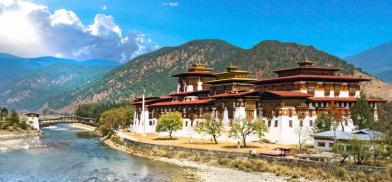
While the pandemic shut down the travel industry this year, local travellers look for ways to revamp their businesses through camping, glamping and Nyekor.
Glamping, a fancier offshoot of camping, has become a new trend in the wake of the pandemic.
Many locals pay extra so that they don’t have to spend pitching tents or rolling up sleeping bags and to avoid the crowd.
https://kuenselonline.com/domestic-tourism-gives-hope-to-tour-agents/
Related Posts
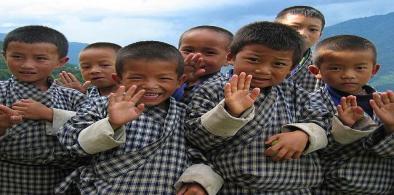
Post a Comment
New York-based writer and columnist Shomik Chaudhuri speaks with Mayank Chhaya on consciousness and human existence | SAM Conversation

Meena Karnik, eminent Marathi film critic and writer, speaks to Mayank Chhaya on Hindi cinema romance from #DevAnand to #ShahRukhKhan | SAM Conversation

Frank Islam speaks with Mateen Haider, Islamabad-based analyst and anchor on the Pakistan situation post elections | Washington Calling

Frank Islam speaks with Anumita Roy Chowdhury, Indian environmentalist | Washington Calling


In Indian capital, Muslim home cooks stir up a culinary revolution | Reimagining India

Transwomen serve inclusion on a plate

Gandhi, 1918 flu pandemic and COVID19

Faith and judiciary: A case from Pakistan

Geetanjali Shree first Indian to win International Booker Prize: Will it open doors for translations of great literature in all Indian languages?
Newsletter Subscription

- Destinations
- Testimonials
- Trip Calendar
- Experiences
- Private Trips
Username or E-Mail
Forget Password?
Do not have an account?
Already a member.

Advantage Of Traveling To Bhutan After Covid-19
The COVID-19 pandemic has had a significant impact on tourism in Bhutan . The country, known for its unique approach to tourism based on the concept of Gross National Happiness (GNH), implemented strict measures to control the spread of the virus, which resulted in a complete halt of international tourism.

Table of Contents
Due to the COVID-19 pandemic, the tourism industry in Bhutan has been significantly impacted. As a result, the Bhutanese government implemented strict measures to control the spread of the virus, including closing borders and suspending tourist visas. However, as the situation improves and international travel resumes, Bhutan is expected to slowly reopen its tourism sector.
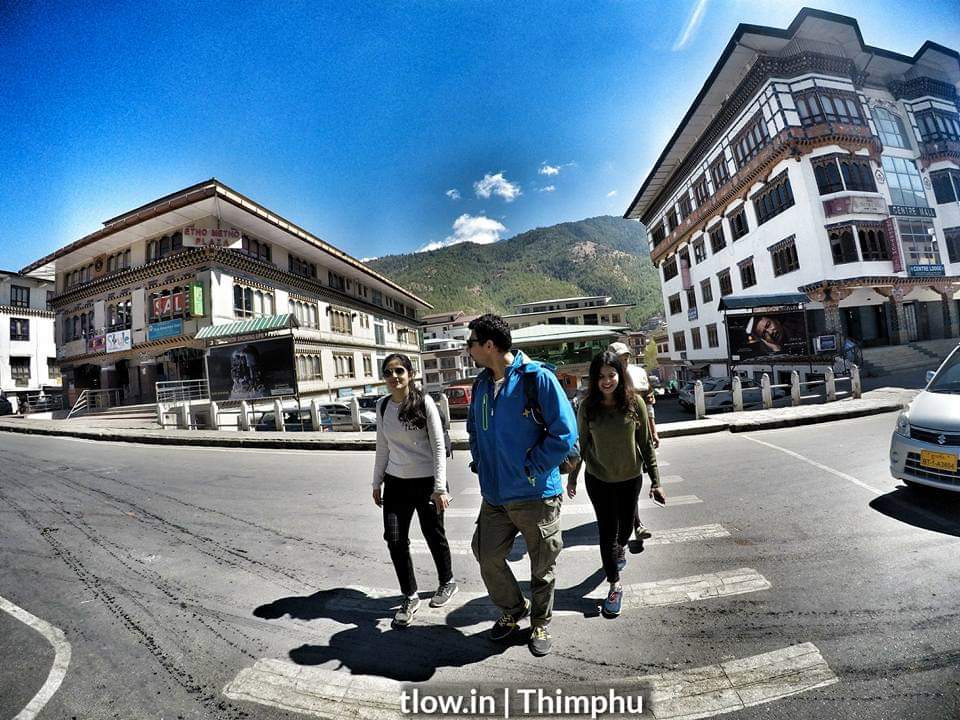
To ensure the safety of both tourists and locals, Bhutan may introduce various precautions and protocols. These measures might include mandatory COVID-19 testing before arrival, temperature checks at airports, and the requirement of a valid travel insurance policy covering medical expenses related to COVID-19. Additionally, visitors might be asked to follow strict health and hygiene protocols during their stay, such as practicing social distancing, wearing masks, and regular hand sanitizing.
Bhutan’s tourism industry is known for its sustainable approach, focusing on high-value, low-impact tourism. This approach might be further emphasized after COVID-19, with the government ensuring that tourism activities align with its philosophy of Gross National Happiness (GNH). This means promoting responsible and sustainable tourism practices that prioritize the well-being of the local communities and the preservation of Bhutan’s unique cultural and natural heritage.
Furthermore, Bhutan might explore new tourism offerings and experiences to cater to the changing travel landscape post-COVID-19. This could include promoting outdoor activities like hiking, trekking, and wildlife spotting, which allow for social distancing and utilize the country’s stunning natural landscapes. Additionally, wellness tourism and holistic experiences focusing on mental and physical well-being might also gain popularity as people seek to rejuvenate and recover from the stresses brought on by the pandemic.
Overall, while the future of Bhutan’s tourism industry remains uncertain in the short term, the country’s commitment to sustainable tourism practices and its unique cultural and natural beauty make it well-positioned to bounce back and attract visitors once travel restrictions ease.
Here are some of the changes observed in Bhutan’s tourism industry after COVID-19:
1. Closure to international tourists:
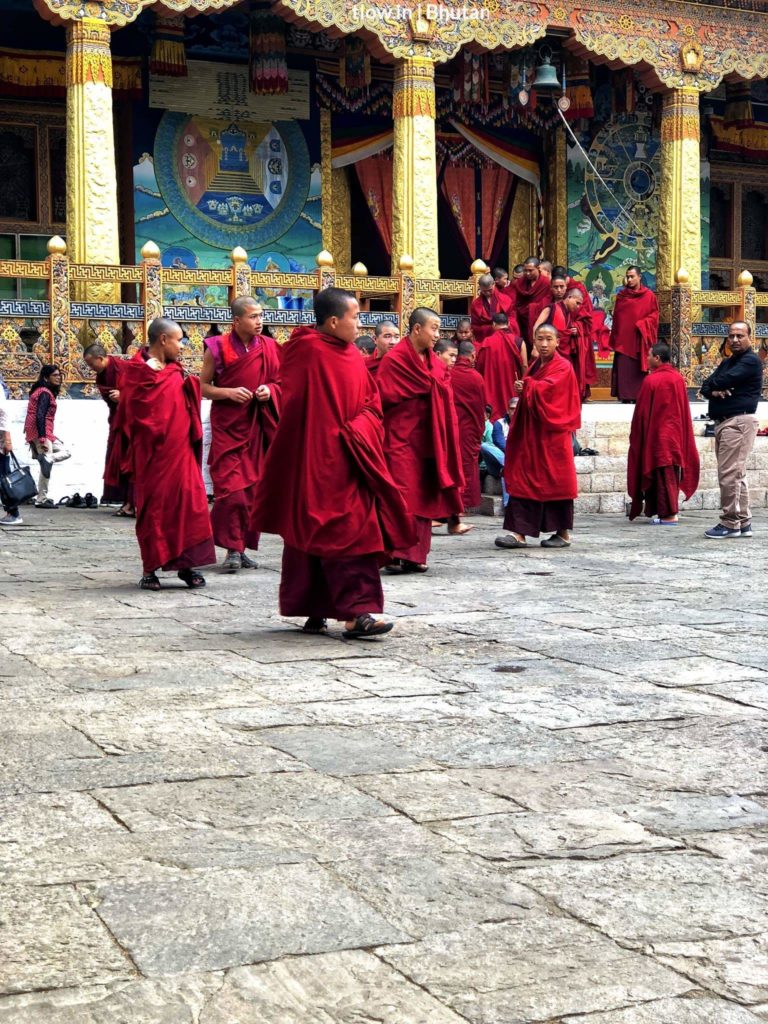
The country closed its borders to international tourists in March 2020 to prevent the importation of the virus. This had a substantial impact on the tourism sector, which heavily relies on international visitors.
2. Shift to domestic tourism:
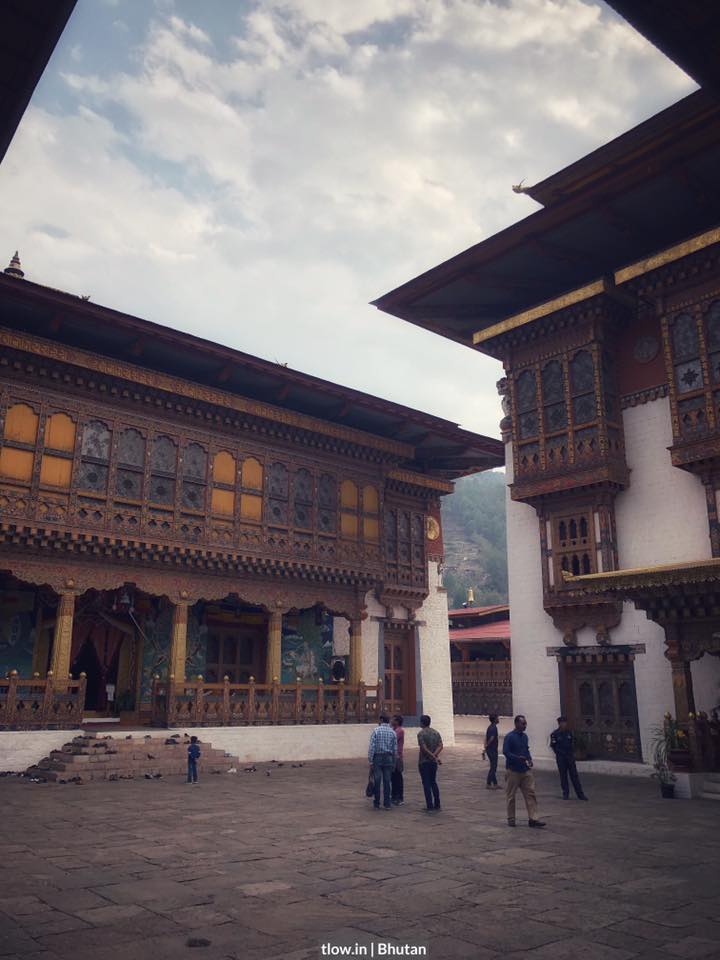
With international visitors no longer allowed, the focus shifted to promoting domestic tourism. The government encouraged Bhutanese citizens to explore their own country to support the local economy and boost tourism within the country.
3. Travel bubbles and limited entry:
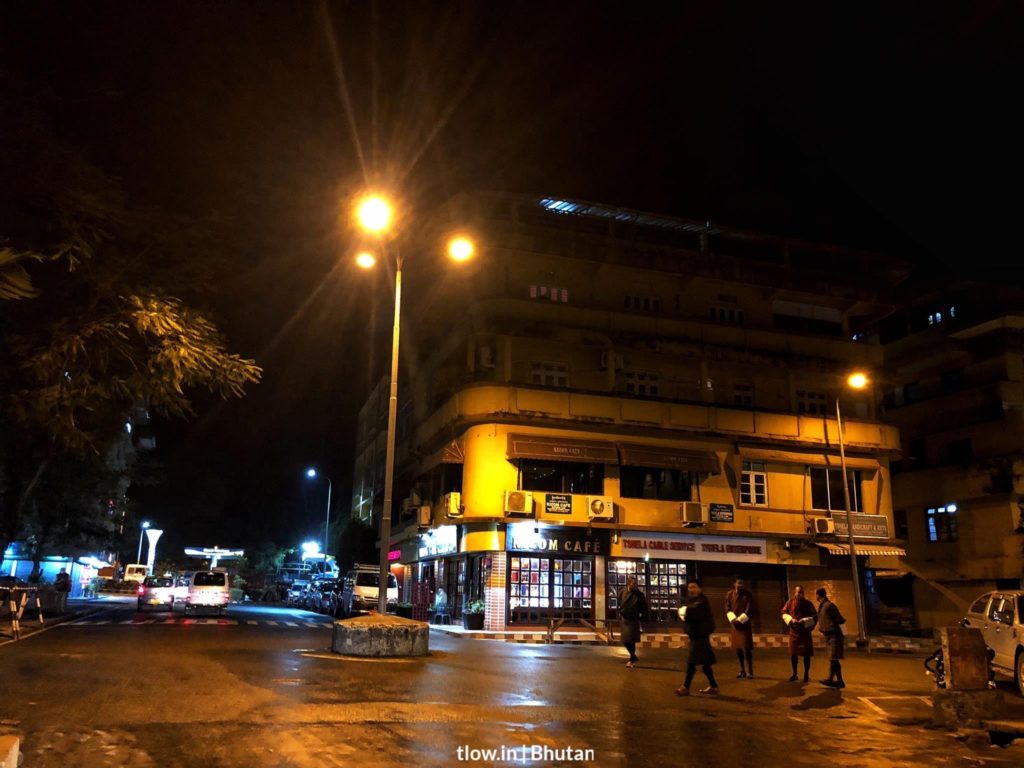
Bhutan has gradually started allowing limited entry for tourists from certain countries with which it has established travel bubble agreements. These agreements enable a controlled resumption of tourism while prioritizing public health and safety.
4. Implementation of safety protocols:
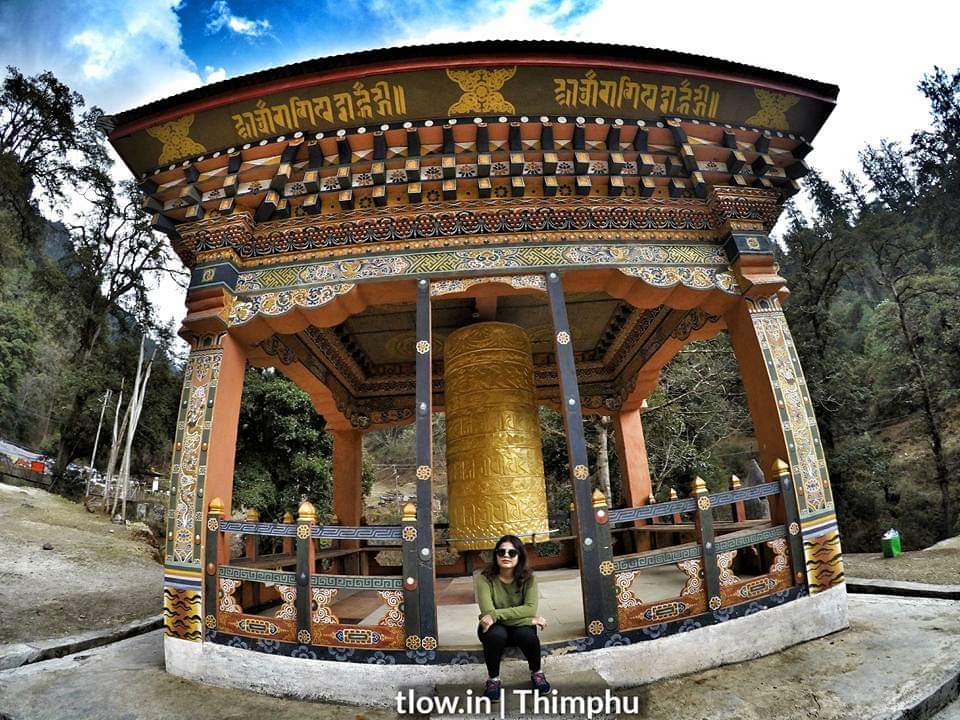
To ensure the safety and well-being of both tourists and locals, Bhutan implemented strict safety protocols. These include mandatory quarantine for tourists upon arrival, regular testing, and adherence to health and hygiene guidelines.
5. Sustainable tourism emphasis:
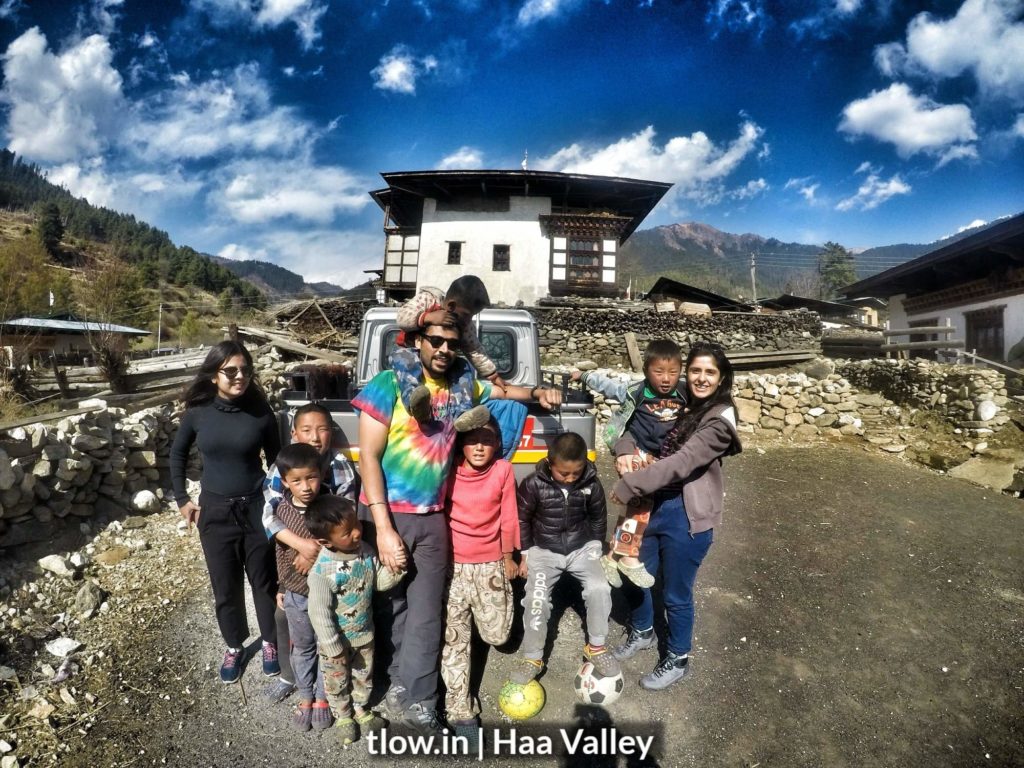
The country has always been committed to sustainable tourism practices, and the pandemic has further highlighted the importance of this approach. The country continues to focus on preserving its environment, culture, and traditional ways of life while exploring avenues to promote responsible tourism.
6. Bhutan has had a Digital transformation:
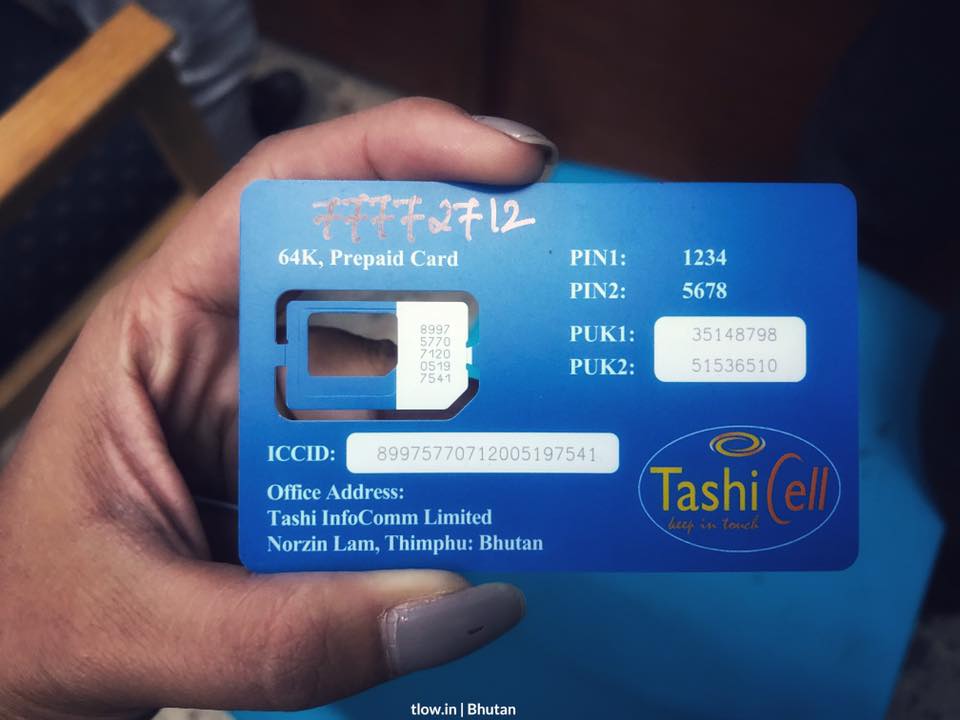
The pandemic accelerated the adoption of digital technologies in Bhutan’s tourism industry. Online platforms and digital marketing strategies have gained increased prominence in promoting the country’s attractions, engaging with tourists, and providing virtual experiences.
7. Recovery plans and support:

The Bhutanese government has developed recovery plans and provided support to the tourism industry, including financial assistance and incentives to mitigate the economic impact of the pandemic. These measures aim to revive the sector by promoting domestic tourism and gradually reopening to international tourists when it is deemed safe.
Overall, the COVID-19 pandemic has significantly affected Bhutan’s tourism industry. However, the country’s commitment to sustainable tourism, emphasis on safety, and promotion of domestic travel have helped in navigating the challenges and laying the foundation for a gradual recovery.
Related Posts
Leave a reply cancel reply.
Save my name, email, and website in this browser for the next time I comment.
Trending Blog’s
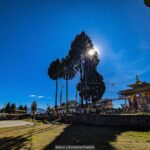
Trending Trips

4N/5D South Sri Lanka road trip

3N/4D South Sri Lanka Road Trip

6 days Backpacker trip around Bhutan

2N/3D Coorg Budget Road Trip

3N/4D Kashmir Backpacking Trip
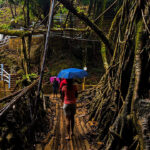
4N/5D Meghalaya Budget Road Trip
Going somewhere.

Bhutan begins efforts to become a model ecotourism destination

Staff Reporter
The Tourism Council of Bhutan (TCB) launched “Mainstreaming Biodiversity Conservation into the Tourism Sector in Bhutan”, a new project with the beginning of a three-day inception workshop in Trashigang on September 27.
Launched coinciding with World Tourism Day, the project signifies the importance of rebuilding the tourism sector to help kick start recovery and growth following the multidimensional socio-economic impact of Covid-19, a press release from the TCB stated.
With the launch of the project worth USD 4.854 million, the country began the journey to mainstream biodiversity conservation into tourism development and position itself as “a model ecotourism destination”.
The project, which is funded by the Global Environment Facility (GEF) with technical support from UNDP, will be implemented as part of the Tourism Flagship Programme over a five-year period.
It will cover two protected areas (PAs) of Bumdeling Wildlife Sanctuary and Sakteng Wildlife Sanctuary and five districts of Lhuentse, Mongar, Trashigang, Trashi Yangtse and Zhemgang.
Representatives from the dzongkhags, including dzongdags, and officials from various agencies are attending the inception workshop.
“The project covers the eastern and south-central parts of Bhutan, which abound astounding biodiversity and has immense untapped ecotourism potential. The landscape hosts some of the rare and endangered biodiversity species, such as red panda, black-necked crane, golden langur and golden masher,” the press release stated.
As home to Ludlow’s Bhutan Glory, Bhutan’s national butterfly, the Bumdeling Wildlife Sanctuary in Trashi Yangtse, for instance, has a high potential for butterfly tourism. “The project landscape is a haven for special birds like Wards’s Trogon, Babblers and Pheasants and is already known for being a birding hotspot.”
The press release, however, added that human-wildlife conflict remains a major concern in the area. Ecotourism, it added, will be used as a tool for long-term conservation gains through the management of co-benefits and trade-offs.
The project is expected to bring about transformational changes in the rural development landscape. It is also expected to help diversify the agriculture dominant rural economy by promoting a wildlife-based economy, boosting domestic tourism, creating employment opportunities and increasing community resilience and connection to nature.
High value, end-to-end biodiversity products will be developed to deliver unique, authentic, and quality tourism.
Lhuentse Dzongdag Jambay Wangchuk said the shift in tourism development focus from the west to the east was a welcome change.
“This will go a long way in enhancing the lives and livelihoods of people in the east. What is important is that the efforts of this project must continue well beyond the project period so that it becomes a truly inclusive and transformative effort,” the dzongdag said.
The project will address barriers to establishing ecotourism through enabling national policy environment and institutional coordination, sustainable financing, innovation, and diversification of ecotourism products.
TCB’s Director General, Dorji Dhradhul, said that the project, which is focused on eco-tourism, was about “inclusive growth” in terms of stakeholders. He explained that stakeholders including human beings, wildlife, environment, and cultural landscapes would benefit from the project.
The pandemic has not only impacted the tourism sector badly but also presented an opportunity to reset tourism. As countries gear up to reopen and revive tourism, many are putting in place measures to build a more sustainable, resilient, and inclusive tourism economy.
The project will strive to engage local communities, including women, the elderly, persons with disabilities and other vulnerable groups in the sustainable production of tourism products and services and ensure its benefits are enjoyed widely and fairly by all of them.
UNDP Resident Representative Azusa Kubota said as a world leader in nature conservation and climate action, Bhutan could become “a pioneer in rebuilding tourism for the future”.
“Bhutan’s potential as a nature or eco-tourism destination has not been fully explored. In a world where solitude, pristine environment and clean air have become rare commodities, Bhutan must tap into its ecotourism potential,” she said.
Edited by Tshering Palden
Read More Stories
A welcome change.
March 26th, 2024
Change is on the horizon for two renowned festivals...
Railway networks must come
March 25th, 2024
The recent announcement by Vinay Kwatra, Foreign Secretary of...
True friendship
March 23rd, 2024
The visit of Prime Minister Narendra Modi to Bhutan...
Light at the end of the tunnel
Recently I was in the company of some acquaintances...
Strengthening Bonds: India-Bhutan Friendship Reaffirmed
Thimphu and Paro were adorned with colourful flags and...
Countries in Asia and the Pacific need to work together to protect our common forest and fresh water resources
United we stand, divided we fall – it’s an...
Buli residents appeal for relocation of archery range amid safety concerns
Buli—Two households in Buli, a village within the Nangkor...
Newcomer Daga United FC leads Pepsi League
Daga United FC, a newcomer in the ongoing Pepsi...
Women’s football prepare for clash against Hong Kong
March 14th, 2024
Bhutanese football fans are feeling hopeful about the women’s...
Vehicle import ban saves Nu 5.3 Billion
March 18th, 2024
The ban on importing vehicles could have helped Bhutan...
Bhutan’s economic growth could slow at 4 percent in this FY 2023-24: WB
The World Bank says Bhutan’s economy will grow slower...
Import bill falls for first time after pandemic
February 27th, 2024
Bhutan’s import bill last year saw a drop in...
Advertisement
You are using an outdated browser. Please upgrade your browser to improve your experience.
Explore Laya Tour
- Domestic Holidays
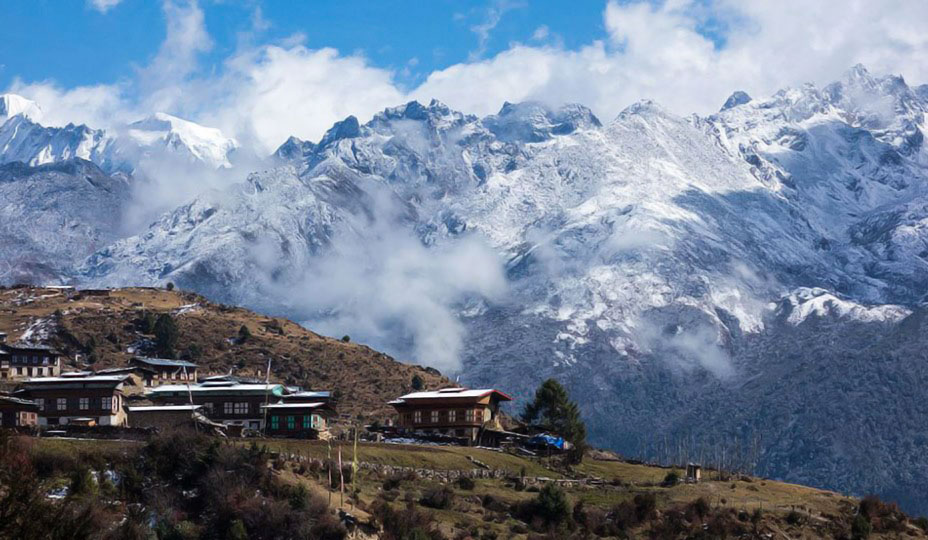
Taktsang Neykor
Explore Laya Tour - Book at WhatsApp +975 17617107 or Email [email protected] This tour comes with a guide to take care of your personal needs...
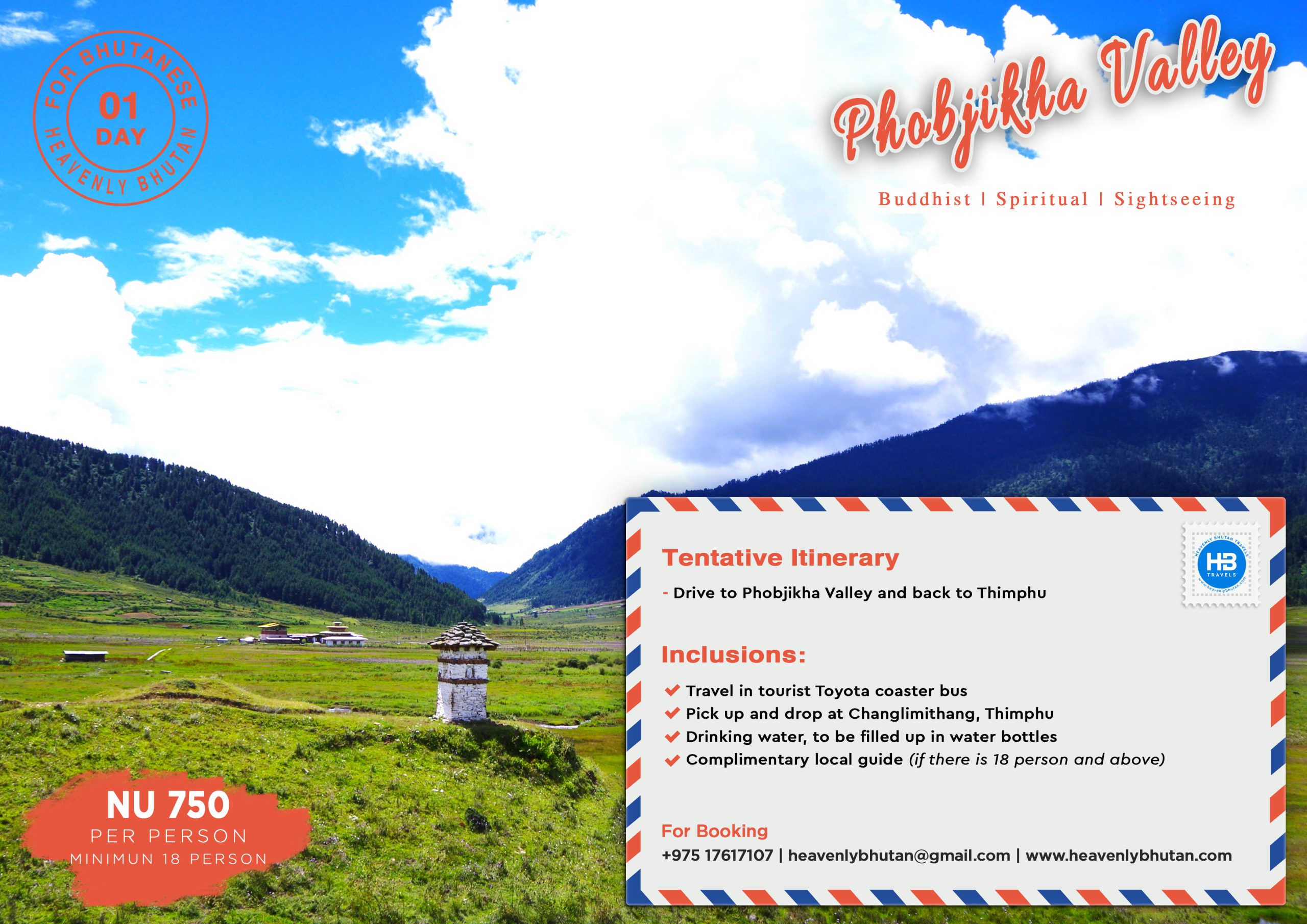
Phobjikha Tour
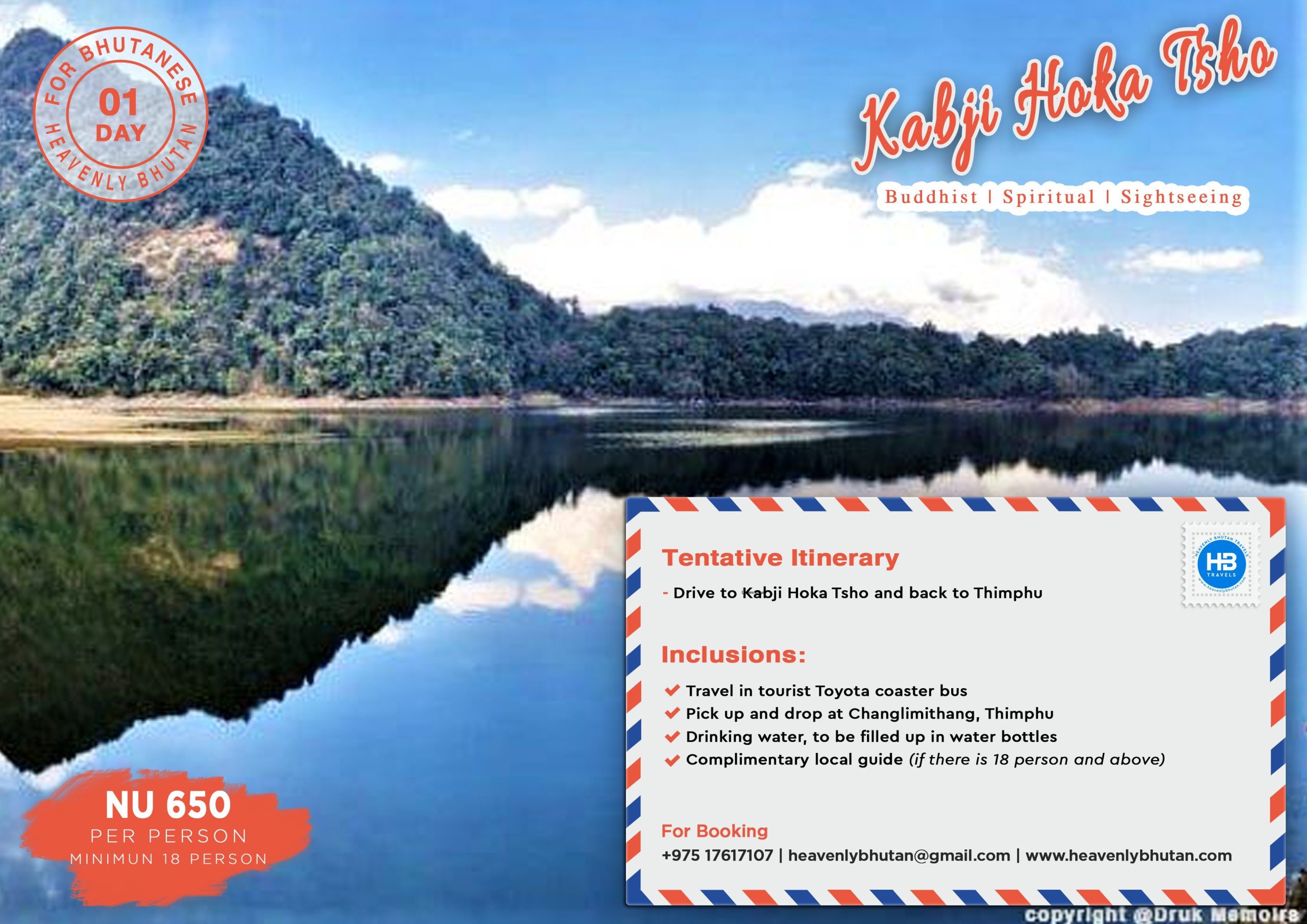
Kabji Hoka Tsho Hike
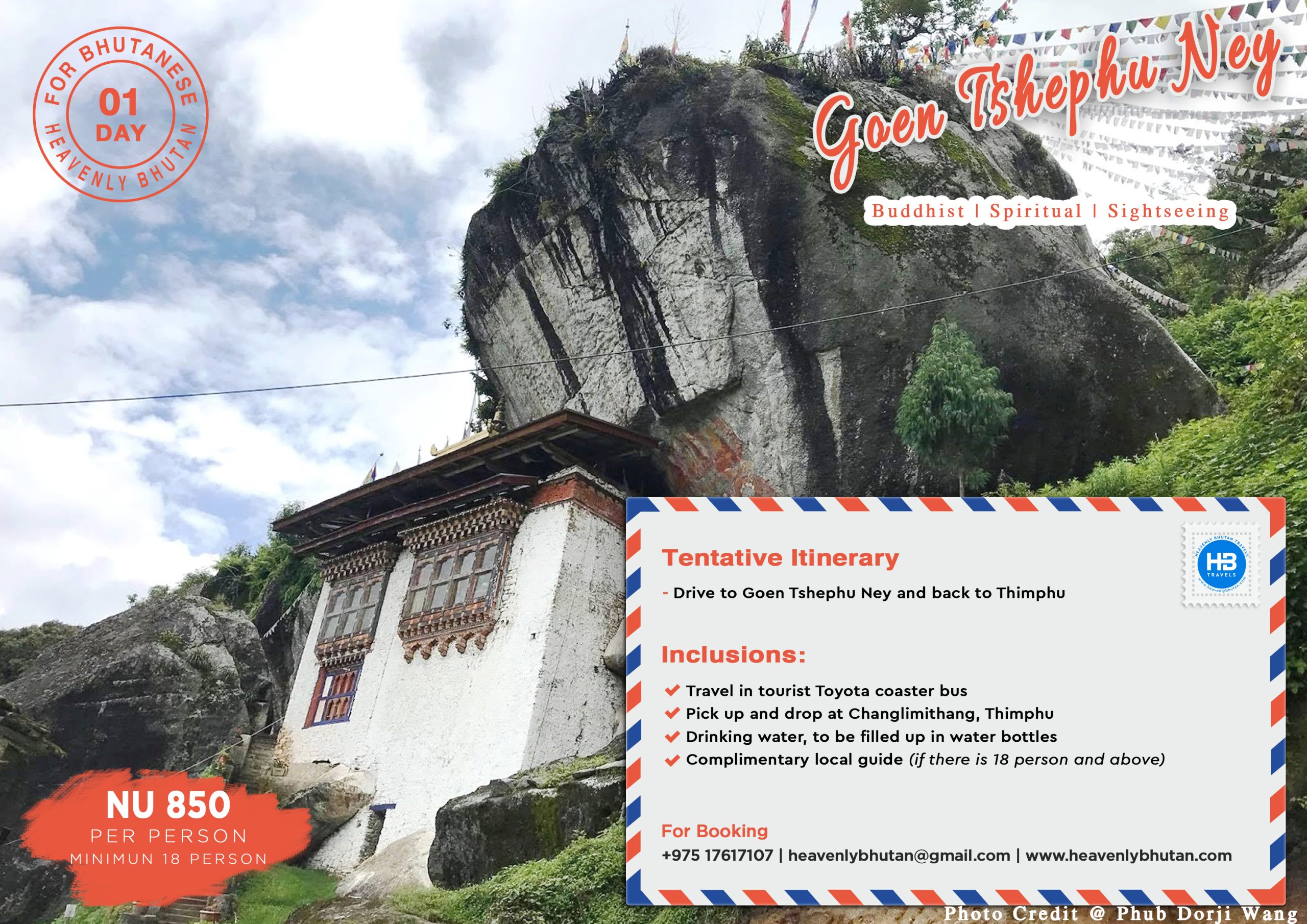
Goen Tshephu Ney
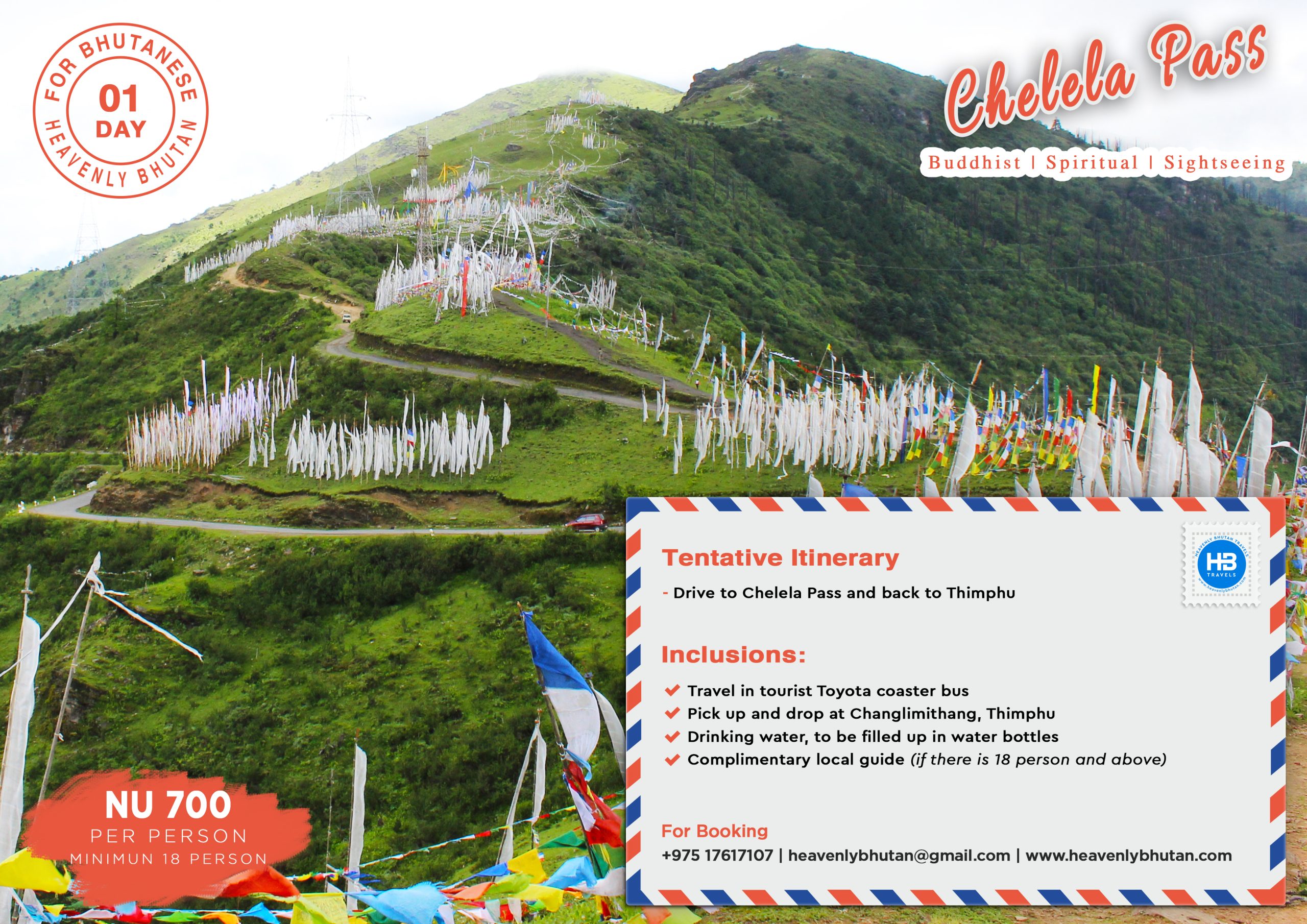
Chelela Excursion
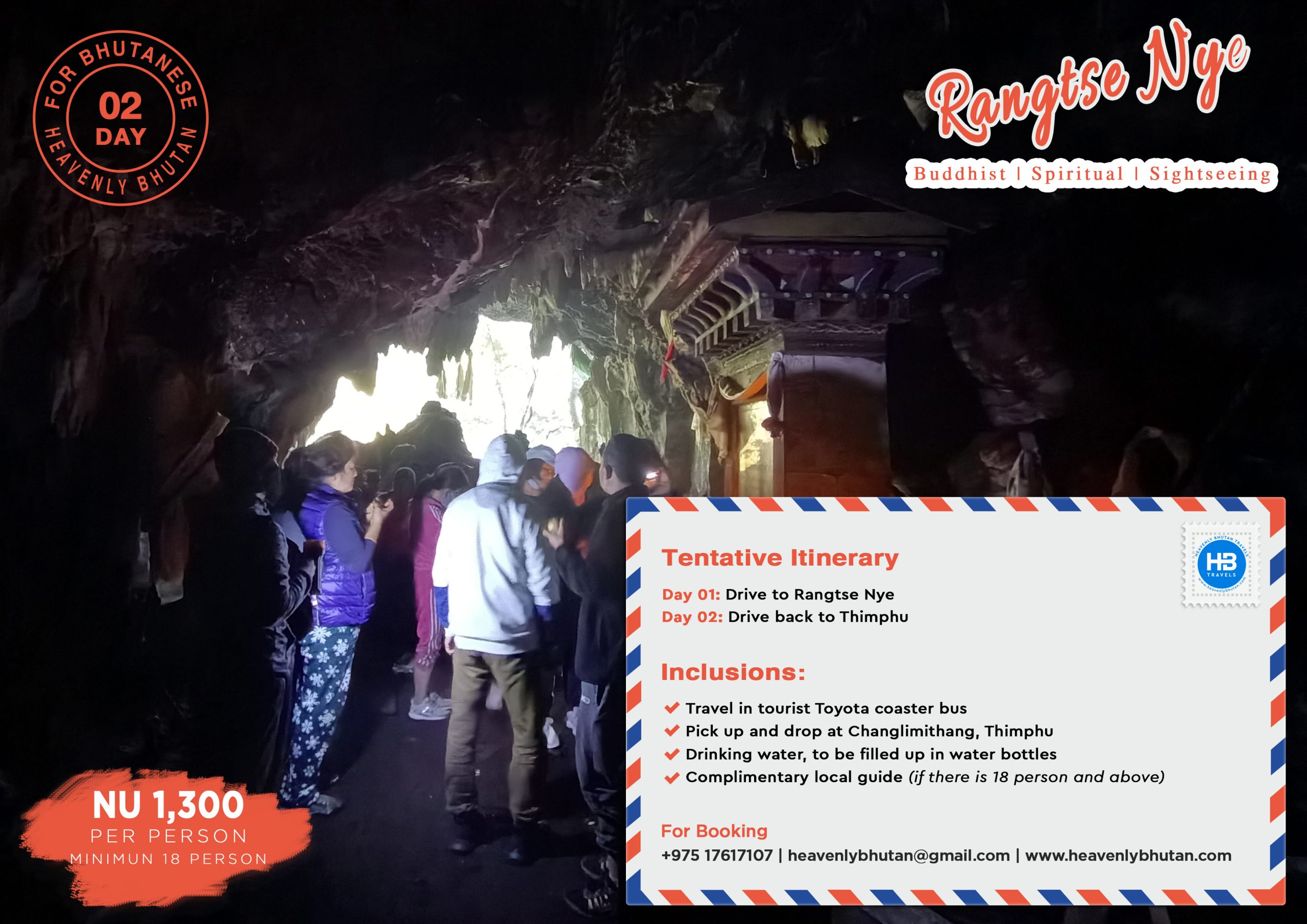
Rangtse Nye
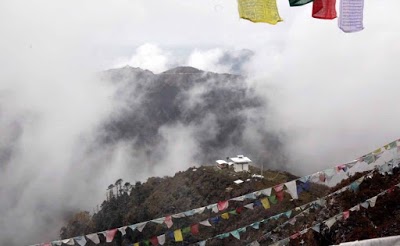
Bemri Lhakhang Trek
Bemri Lhakhang Trek - Book at WhatsApp +975 17617107 or Email [email protected] This tour comes with a guide to take care of your personal needs and...
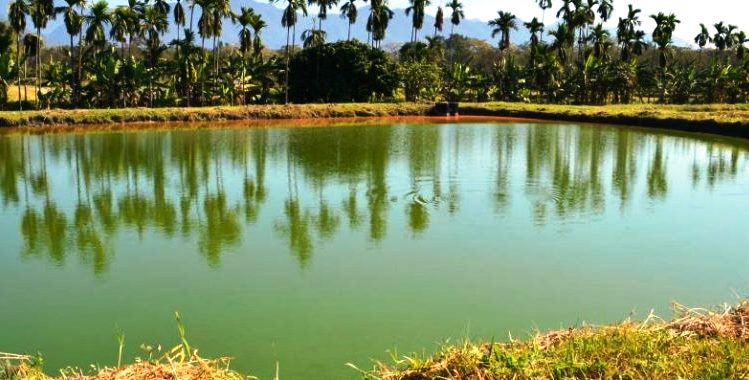
Gelephu Farm Tour
Gelephu Farm Tour - Book at WhatsApp +975 17617107 or Email [email protected] This tour comes with a guide to take care of your personal needs...
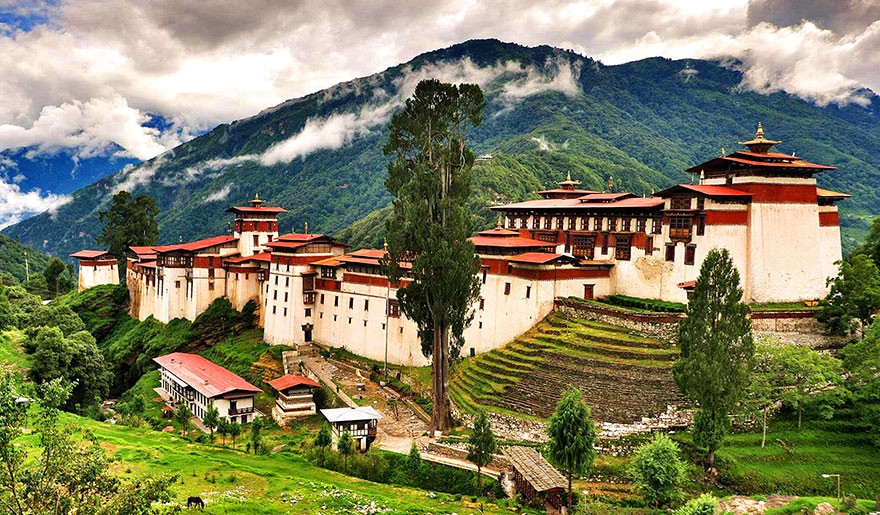
Trongsa Bumthang Tour
Trongsa Bumthang Tour - Book at WhatsApp +975 17617107 or Email [email protected] This tour comes with a guide to take care of your personal needs...
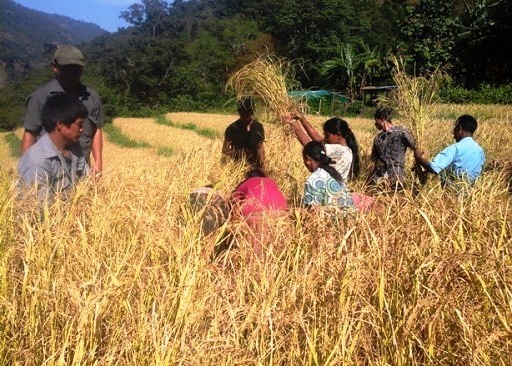
Tsirang Agriculture Tour
Tsirang Agriculture Tour - Book at WhatsApp +975 17617107 or Email [email protected] This tour comes with a guide to take care of your personal needs...
Full Name :
Your Email :
Name of the trip :
Select Country:
No of PAX :
Hotel —Please choose an option— Budget Standard Deluxe Luxury
Enter Message :
More From Forbes
What you need to know about the festivals of bhutan.
- Share to Facebook
- Share to Twitter
- Share to Linkedin
Festivals in Bhutan attract visitors from around the world.
In the heart of the Himalayas lies a kingdom veiled in tradition and adorned with breathtaking landscapes of mountains and valleys. This is the Kingdom of Bhutan , often referred to as the Land of the Thunder Dragon. Nestled between India and China, this small yet extraordinary country captivates the hearts of travelers with its untouched beauty, vibrant culture, and deeply-rooted traditions. But perhaps what truly sets Bhutan apart are its festivals, where the country comes alive in a kaleidoscope of colors, dances, and ancient rituals.
Bhutan, a landlocked country bordered by India to the south, east, and west, and by China to the north, is a realm where tradition meets modernity in a harmonious blend. Tucked away from the hustle and bustle of the modern world, Bhutan boasts a pristine environment, with lush forests, snow-capped peaks, and serene monasteries dotting the landscape. It is a place where Gross National Happiness is prioritized over Gross Domestic Product, emphasizing the importance of holistic well-being over material wealth.
Festivals of Bhutan
Travelers come from all over the world to attend Bhutan’s marquee festivals. Some of the most famous include: the Black Necked Crane Festival, Bhutan Bird Festival, Druk Wangyel Tshechu, Punakha Dromche Punakha Tshechu, Paro Tshechu, and the Rhododendron Festival.
Black-Necked Crane Festival
Dancers at the Black Necked Crane festival.
This festival takes place in Gangtey Goenpa, about four hours drive from Thimphu. This festival celebrates the returning of the black-necked cranes to Bhutan from parts of Tibet, China and Arunachal Pradesh, India. The Black-Necked Crane Festival is a tribute to one of Bhutan’s most beloved animals. It also raise awareness within communities about the importance of conserving this species of bird. Serving as a platform to highlight the hidden gems of Gangtey and Phobjikha Valley, this festival gives the local economy a boost while showcasing the beauty of the surrounding landscape.
Best High-Yield Savings Accounts Of 2024
Best 5% interest savings accounts of 2024, bhutan bird festival.
Located in Tingtibi in Zhemgang district, about six hours from Thimpu, the annual Bhutan Bird Festival is held in the the eco-tourism capital of Bhutan. This district is home to over 500 species of birds including Pallas's Fish Eagle, Satyr Tragopan, Rufous-necked Hornbill, Spotted Elachura, Blue-capped Rock Thrush, Emerald Cuckoo, Nuthatch, and the critically endangered White-bellied Heron.
This three-day bird festival attracts birders from around the world and brings upscale eco-tourism in the region. The festival features cultural and entertaining performances by local bands, dancers, singers, and feature traditional Bhutanese music. Visitors can sample the local Bhutanese cuisine at the food stalls such as kharang (maize grits), smoked fish, bamboo shoots, pickles, fruits and cereals, and tongpa, alcoholic beverages made from wheat, served in bamboo containers.
Druk Wangyel Tshechu
The Druk Wangyel Tshechu festival is held at Dochula mountain pass. Located less than an hour from the capital Thimphu, and situated against the backdrop of the Himalayan mountain range, many sacred dances—including mask dances and traditional Bhutanese folk dances—are performed at the festival.
Punakha Dromche
Punakha Dromche is one of the most popular festivals in Punakha. It takes place at Punakha Dzong fortress, as the jacaranda flowers begin to bloom. This festival reenacts the 17th-century battle against the Tibetan army. The festival features local militia men or ‘pazaps’ dressed in traditional battle regalia as a way of remembering when the eight great villages or ‘tshochen’ - from Thimphu and Punakha - came forward and expelled the invading Tibetan forces who had come to take away the sacred relic, Rangjung Kharsapani. The battle reenactment is then followed by a demonstration of ‘norbu chushani’ or an immersion of relics in the Mo Chhu River.
Punakha Tshechu
Another popular festival in Punakha is the three-day Punakha Tshechu festival. Held in the courtyard of Punakha Dzong, Punakha Tshechu takes place to honour Guru Rinpoche, the tantric Buddhist Vajra master. As one of the most popular tshechus in the country, this festival is attended by locals and visitors. Featuring various mask dances or ‘cham’ and traditional Bhutanese folk dances, this culturally rich festival showcases people in their best festival attire.
Paro Tshechu
The annual Paro Tshechu is held at the Rinpung Dzong in Paro. Tshechus are renowned for being the most significant and visible manifestations of the Bhutanese culture, art and traditions, making them a popular place to visit for travellers looking to explore Bhutan.
The festival features various mask dances and traditional Bhutanese folk dances performed by both monks as well as locals. The main highlight of the festival is the unfurling of the immense embroidery of Guru Rinpoche (Guru Throngdrel) on the final day where the eight manifestations of Guru Rinpoche are depicted. The giant embroidery covers the entire three-story wall and many people line up to view and get blessings from the throngdrel every year.
Rhododendron Festival
The Rhododendron Festival is held at the Royal Botanical Park in Lamperi. This two-day festival marks the beginning of the spring season. It showcases several types of blooming rhododendron species found in the park. The aim of this festival is to celebrate the rich flora, deep culture and divine food of Bhutan. The rhododendron is seen as a culturally significant flower within Bhutan, with the nation having currently identified and recorded 46 species of rhododendron. The Royal Botanical Park in Lamperi houses about 29 of these species.
The festival will feature cultural activities and dances by the local communities and school children. There will be textile and souvenir stalls and food stalls including rhododendron-themed foods and drinks. Nature-lovers can go forest-bathing along the Lungchutse hiking trail, about a 2-hour walk from the Dochula Pass. It’s a beautiful trail with canopies of trees, and around the time of the festival will have stunning rhododendron flowers in full bloom.
What sets Bhutanese festivals apart is the sense of community and spirituality that permeates every aspect of the celebrations. Locals dress in their finest traditional attire, with men donning the gho, a knee-length robe, and women wearing the kira, an elegant wrap-around dress. Families come together to share meals, exchange blessings, and partake in age-old rituals that have been passed down through generations.
Bhutan's festivals offer a window into the soul of this extraordinary country, where spirituality, tradition, and natural beauty converge to create an unforgettable experience. Bhutan's commitment to preserving its cultural heritage and pristine environment makes it a truly unique destination.
Bhutan's policy of high-value, low-impact tourism translates into a meaningful and sustainable experience for travelers. The government regulates tourism through a daily tariff, which includes accommodation, meals, transportation, and a contribution to Bhutan's development fund. This approach not only helps preserve Bhutan's fragile ecosystem but also ensures that tourism benefits local communities directly.

- Editorial Standards
- Reprints & Permissions

Love Exploring
The world's most unloved countries where tourists rarely visit
Posted: March 26, 2024 | Last updated: March 26, 2024
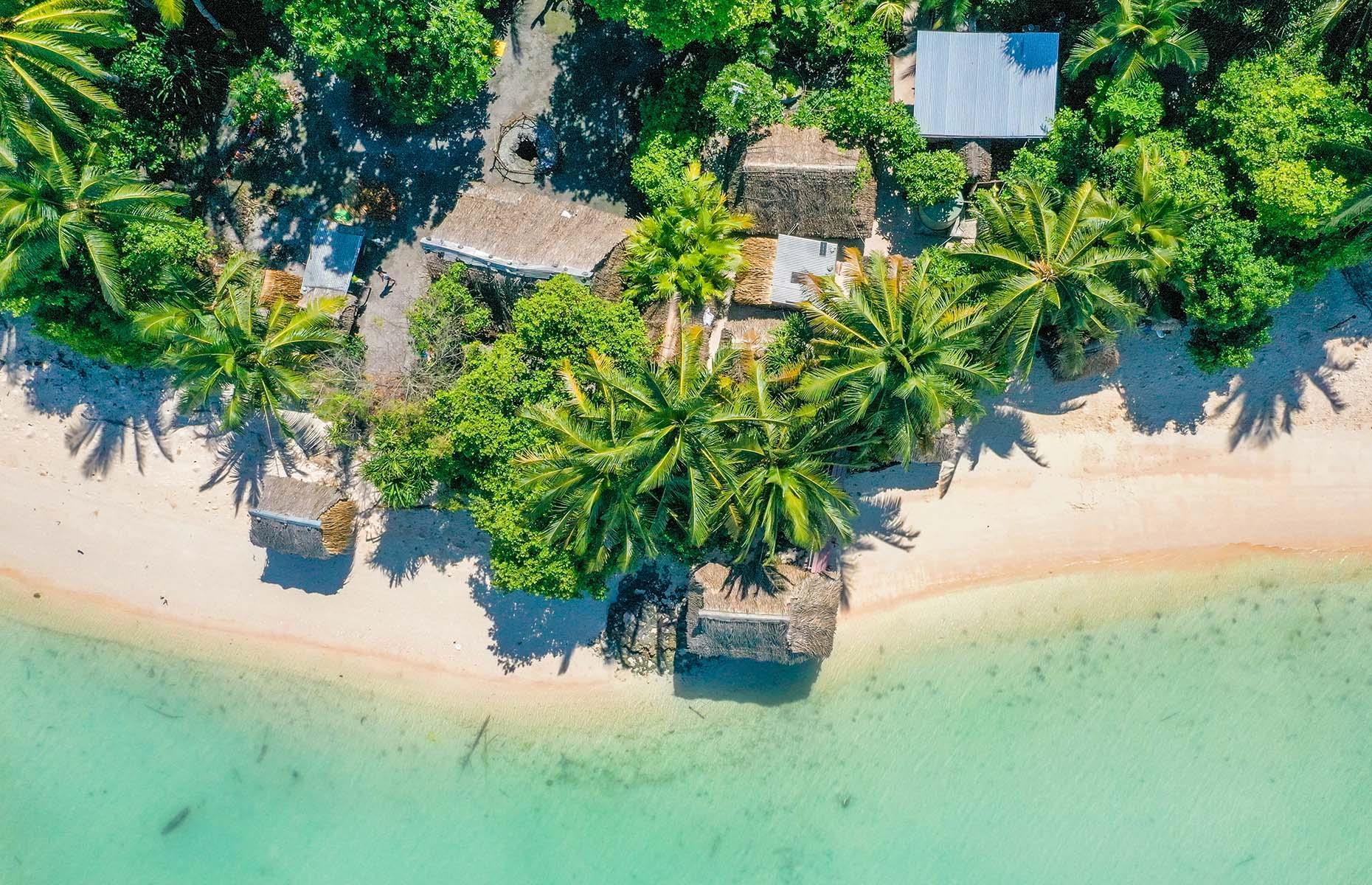
Off the radar
Some destinations get all the love. Too much, perhaps, with overtourism creating issues in popular cities and countries. Meanwhile other places fly under the radar, despite an abundance of natural beauty, culture or history, whether because they're difficult to reach or simply don't feature much on travellers' wish lists. The latest UN Tourism data, based on 2022 visitor numbers, has revealed some of the world’s most undervisited countries, offering intrepid travellers some fresh travel inspiration. Be sure to check travel guidance and government recommendations before considering a trip.
Click or scroll on to discover our countdown of some of the least-visited countries in the world...
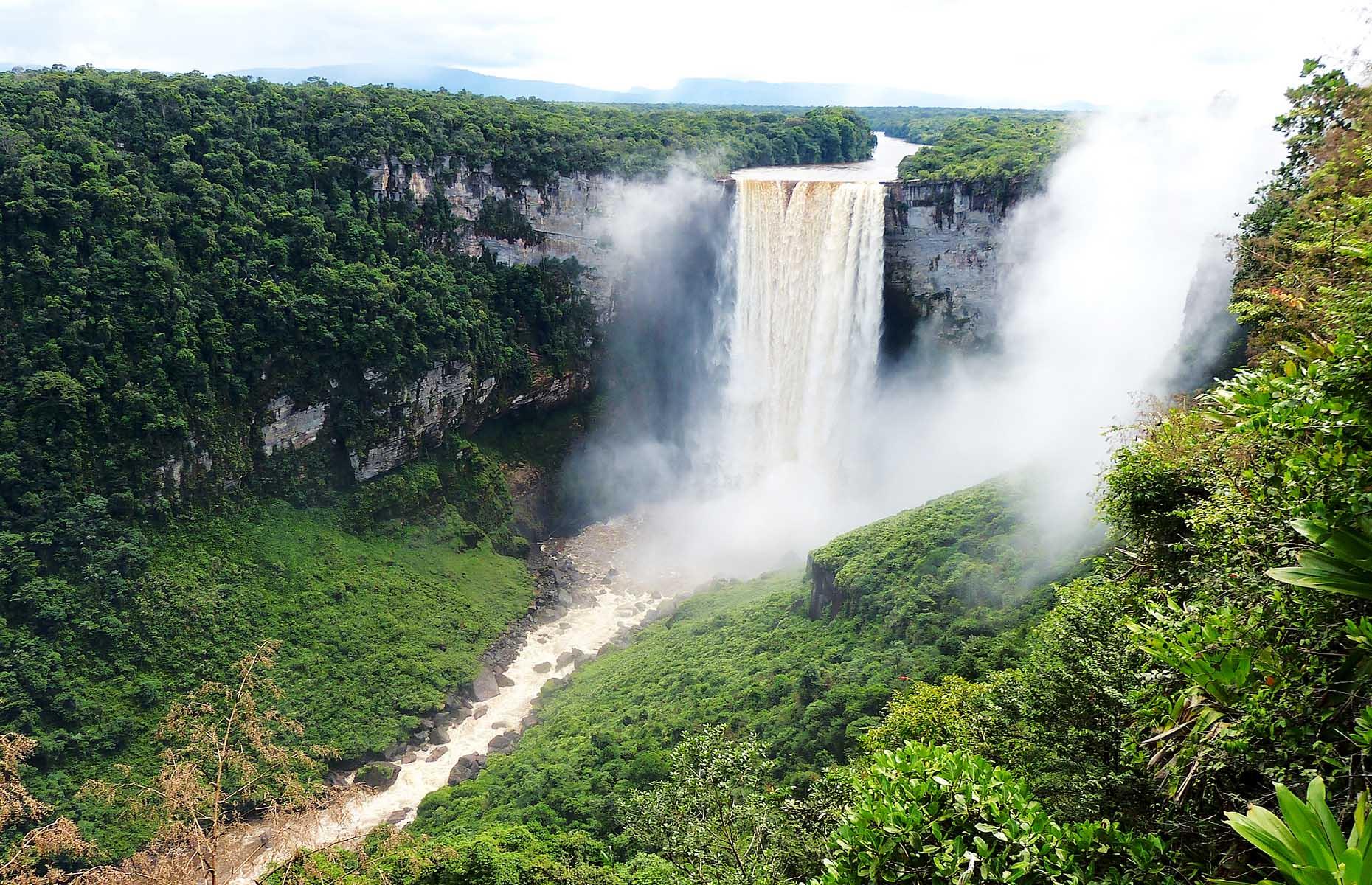
Guyana has long been South America’s least-visited country, with a population of just 818,000, few flights to get there and dense Amazon rainforest making it a challenging place to explore even after you arrive. But that looks set to change, as more airlines – including British Airways from London; American Airlines from Miami and New York; and United Airlines from Houston – have begun flying to capital Georgetown in recent years. So much so that 2023 was its best-ever year for visitors, with just over 319,000 people arriving on its shores.

The country’s unique blend of Caribbean culture, colonial-era architecture and diverse flora and fauna set it apart from any other South American nation. Its best-known attraction is Kaieteur Falls, the largest single-drop waterfall in the world, and a good place to spot endemic bird species including the distinctive Guianan cock-of-the-rock (pictured). Georgetown has its merits too, bringing together British and Dutch history with a modern Caribbean-influenced twist.
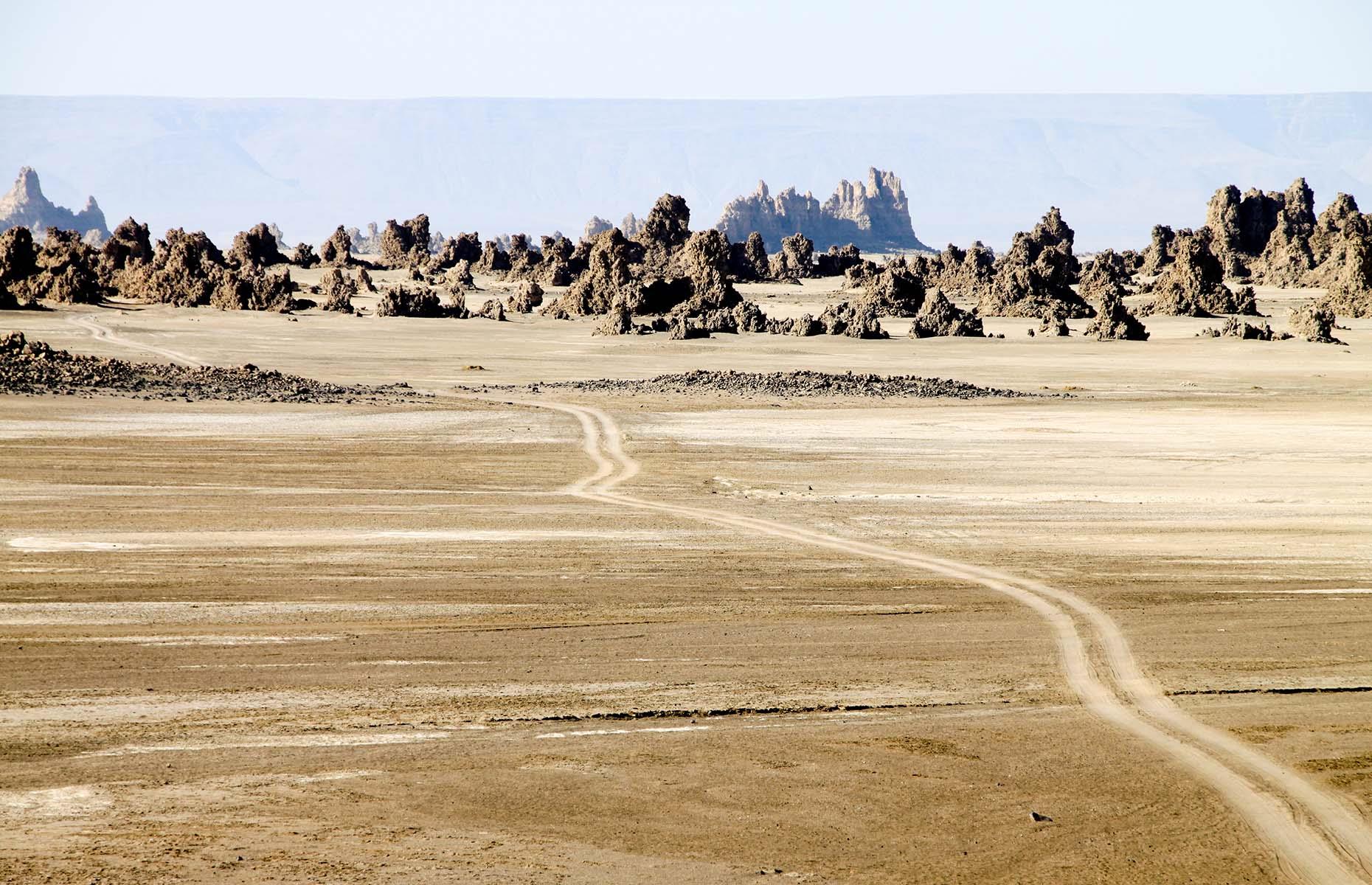
This often-overlooked country on the Horn of Africa barely registers on the radar of even the most devoted Africa fans, but it deserves to be better known. Few other places can lay claim to such an array of different landscapes, from volcanic crater lakes and vast, rugged canyons to bubbling hot springs and limestone rock chimneys dotting desolate, other-worldly plains, which were enough to attract about 145,000 travellers in 2022.

French colonialists established Djibouti City in 1888, and it’s now a vibrant, multicultural capital that showcases the country’s mix of African, Arabic and Asian influences. But it’s Djibouti’s landscapes that really stand out, including salt-rich Lac Assal (pictured), the lowest point in Africa and surrounded by the looming shadows of volcanoes; and the other-worldly plains of Lac Abbe. Travel advisories suggest steering clear of the border area with Eritrea and remaining vigilant against the threats of crime and terrorism when travelling around Djibouti.
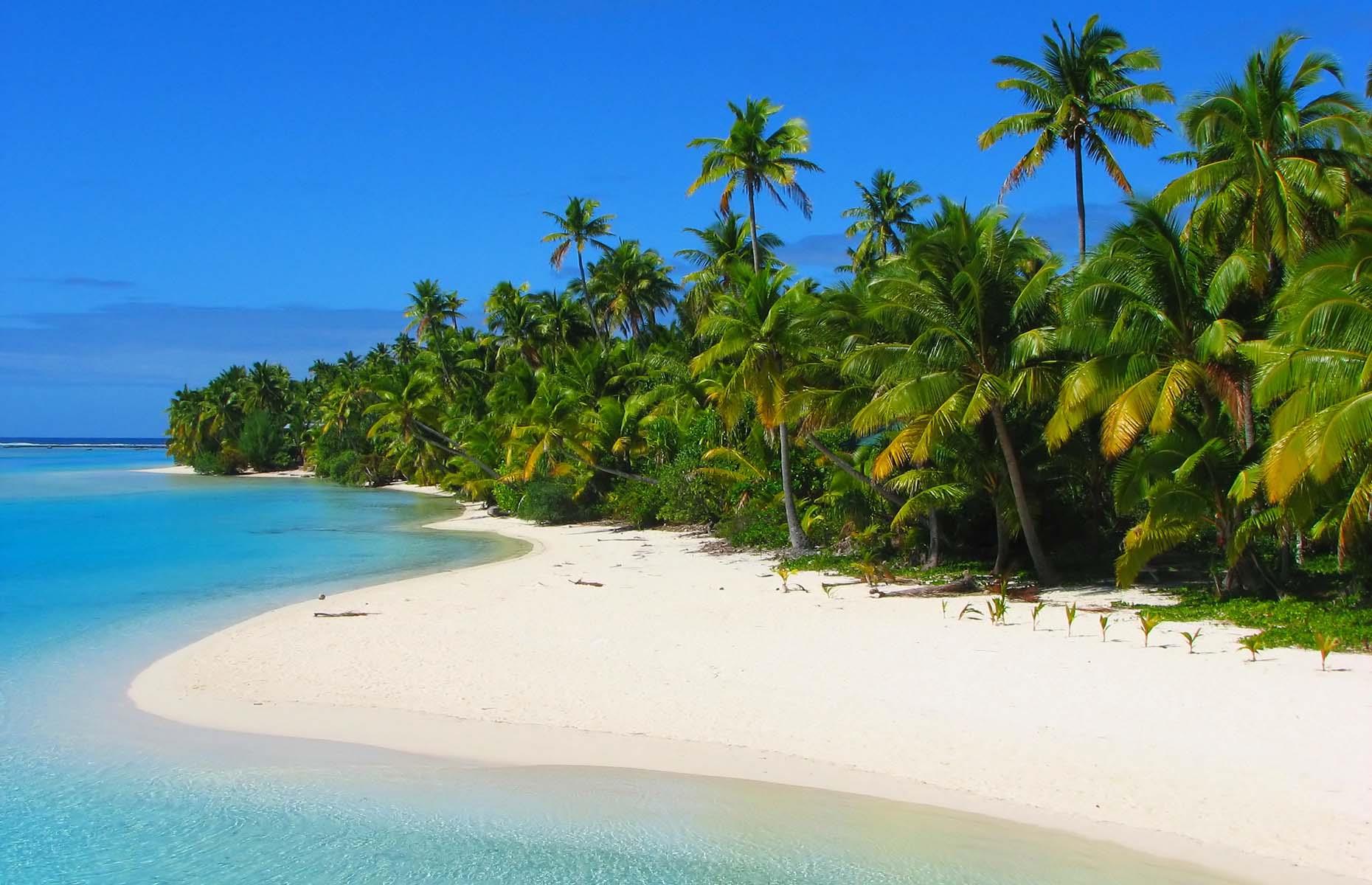
Cook Islands
This cluster of 15 Polynesian islands are as close to paradise as you can get, with turquoise seas and white-sand shores fringing lush, tropical interiors, and where no hotel can ever be built higher than the tallest coconut tree. It’s on the same time zone as Hawaii, and has political links to New Zealand, along with its fellow South Pacific nations. Around 121,000 visitors touched down here in 2022, impressive given the islands’ population stands at just 20,200 people.
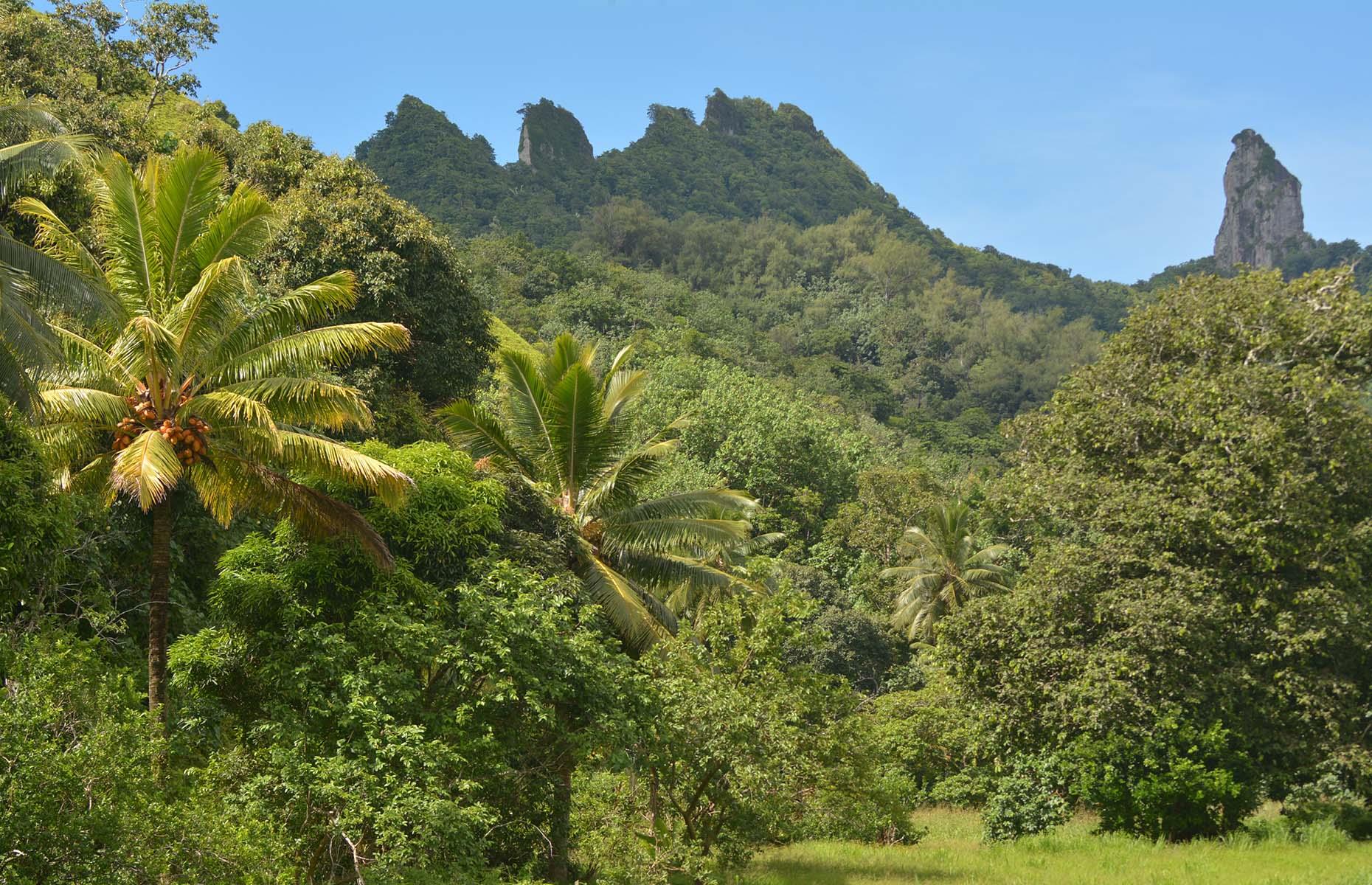
Rarotonga is the largest island in the archipelago, home to its only airport and the highest peaks including Te Rua Manga (pictured). There are no traffic lights here, though it’s easy to get around as there’s only one ring-road on the island and a choice of just two bus routes: clockwise or anti-clockwise. Along with nearby Aitutaki, expect accommodation right on the water’s edge, with boat trips, fishing and diving in the water, or hiking, quad-biking and cycling inland, plus cultural festivals including the Te Maeva Nui Festival which celebrates the islands’ independence.
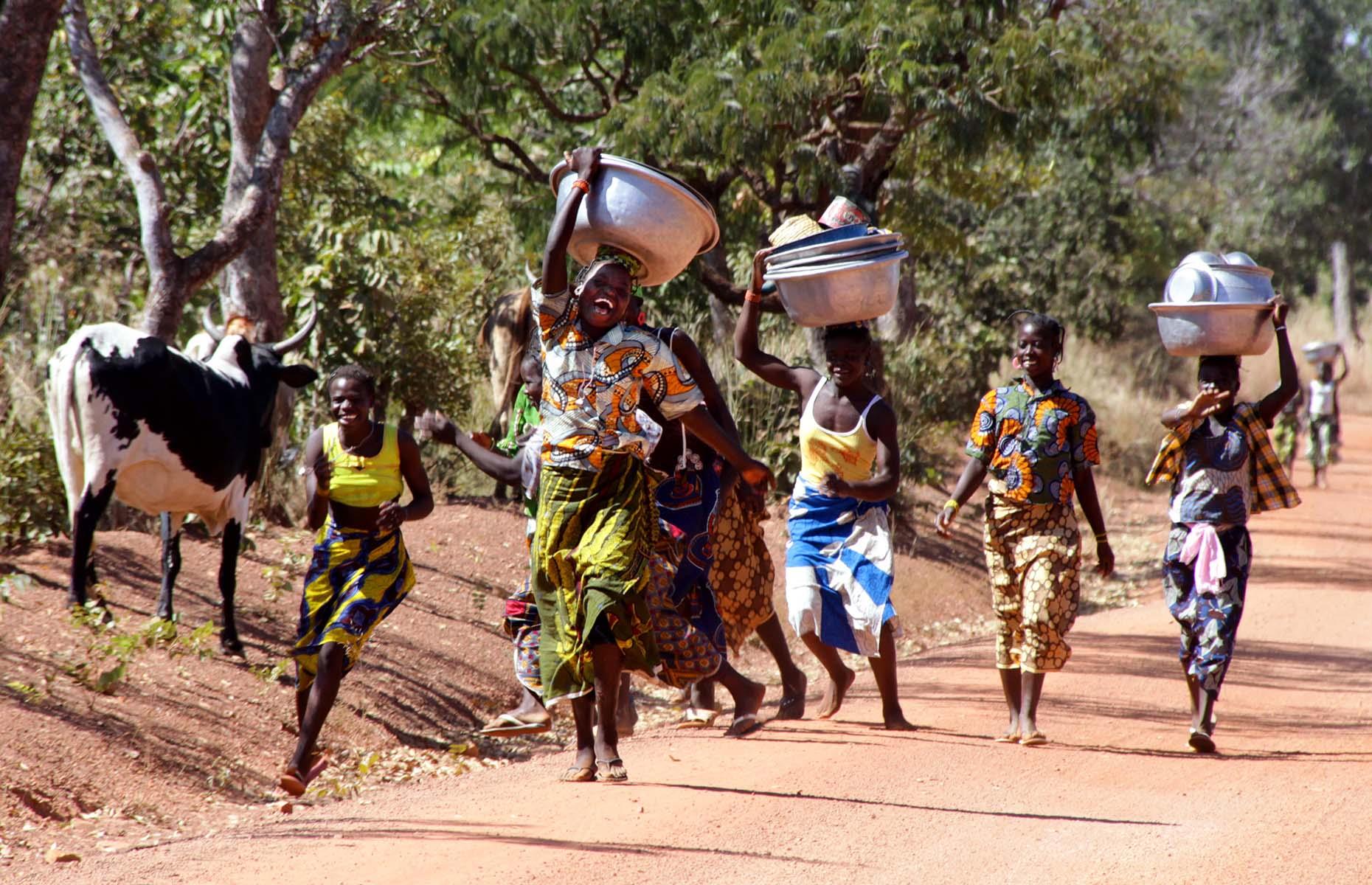
Burkina Faso
Moving from the east of Africa to the west, the small landlocked nation of Burkina Faso brought in 116,000 visitors in 2022, though both the UK and US governments advise tourists to avoid the country due to political instability and the risk of kidnapping. The former French colony is known for exporting gold and cotton, which makes up the lion’s share of its economy.
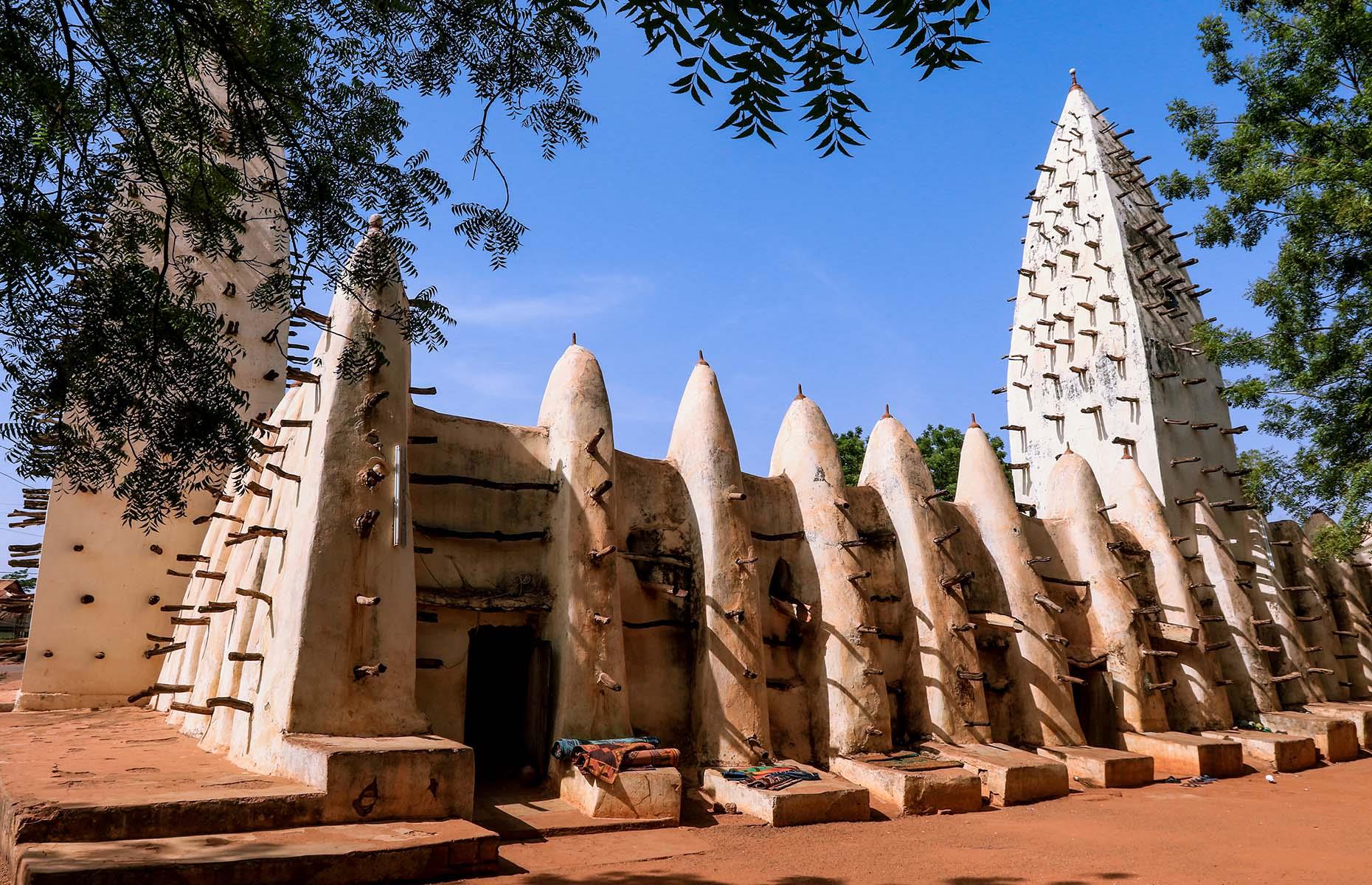
Liechtenstein
It might seem surprising to see a European nation on a list of the world’s least-visited countries, yet the pocket-sized principality of Liechtenstein merits a spot as it brought in just 101,000 tourists in 2022 – although that’s actually an improvement on previous years. It’s just 62 square miles (161sq km) and is one of only two ‘double-landlocked’ countries – those that are surrounded only by landlocked countries – in the world, with the other being Uzbekistan.
Liking this? Click on the Follow button above for more great stories from loveEXPLORING

Fairy-tale castles and captivating countryside are the main attractions in tiny Liechtenstein. The capital is watched over by the 700-year-old Schloss Vaduz (pictured), once built as a fortress to defend the city and now the official residence of the prince. Outside Vaduz, it’s all about hiking. There are more than 30 trails through the mountains offering a front-row seat to stunning scenery and shimmering lakes.
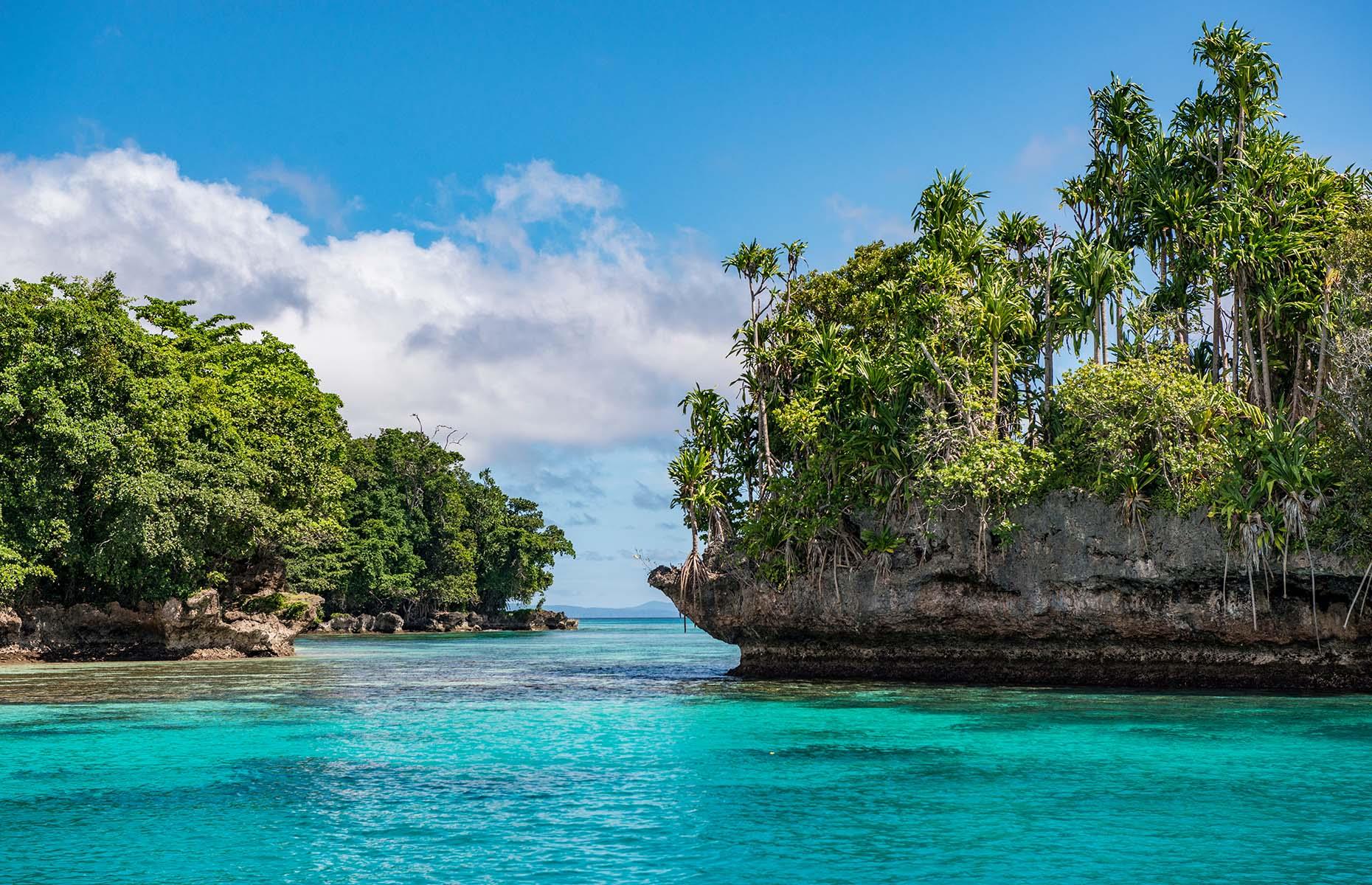
Papua New Guinea
This Pacific nation makes up the eastern half of the island of New Guinea – the second-largest island in the world, shared with the Indonesian states of Papua and West Papua – along with 600 offshore islands. Its remote location and rugged, jungle-filled terrain have long been a draw for intrepid explorers, though just 69,000 visitors made it as far as these islands in 2022. It’s worth checking the latest travel advisories before venturing too far off the beaten path, as some areas are off-limits to tourists.
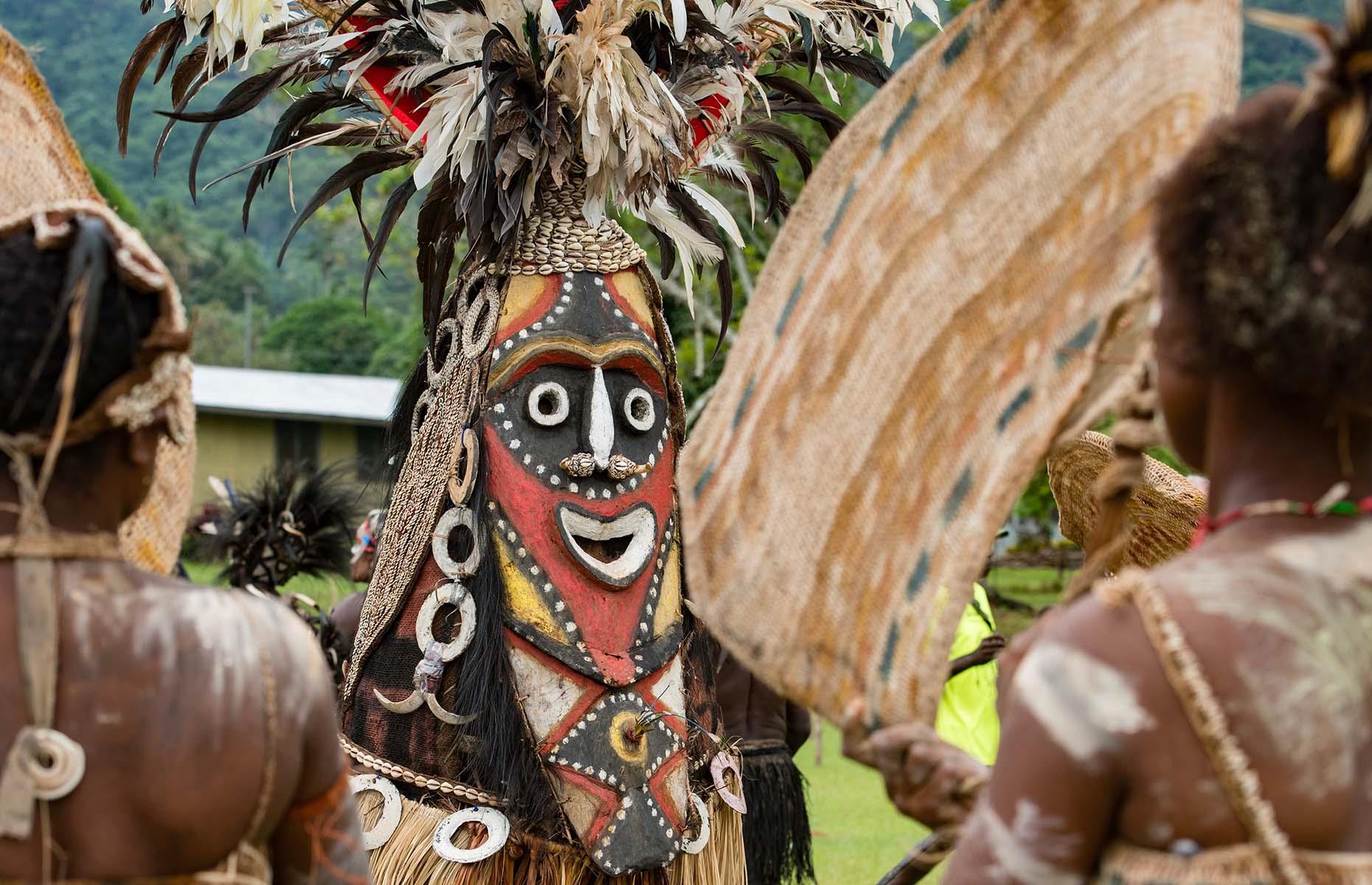
It might be one nation now, but the islands of Papua New Guinea are made up of hundreds of distinct communities, cultures and customs. More than 800 languages are spoken across the country and key cultural highlights include the Sepik Crocodile Festival (pictured), paying tribute to the fresh and saltwater crocs that roam these waters; and the Enga Cultural Festival, which seeks to preserve the little-known Enga way of life. Look out for wildlife too, with 38 species of birds of paradise and the world’s smallest parrot.

This Y-shaped archipelago of islands in the South Pacific has never been a magnet for mass tourism, and has faced a long road to recovery to rebuild tourist infrastructure following the devastation wrought by Cyclone Pam in 2015. Still, some 65,000 visitors ventured to its 80 islands in 2022, mostly via flights from Australia or New Zealand, though there are connections from Fiji and New Caledonia for island-hopping adventures.
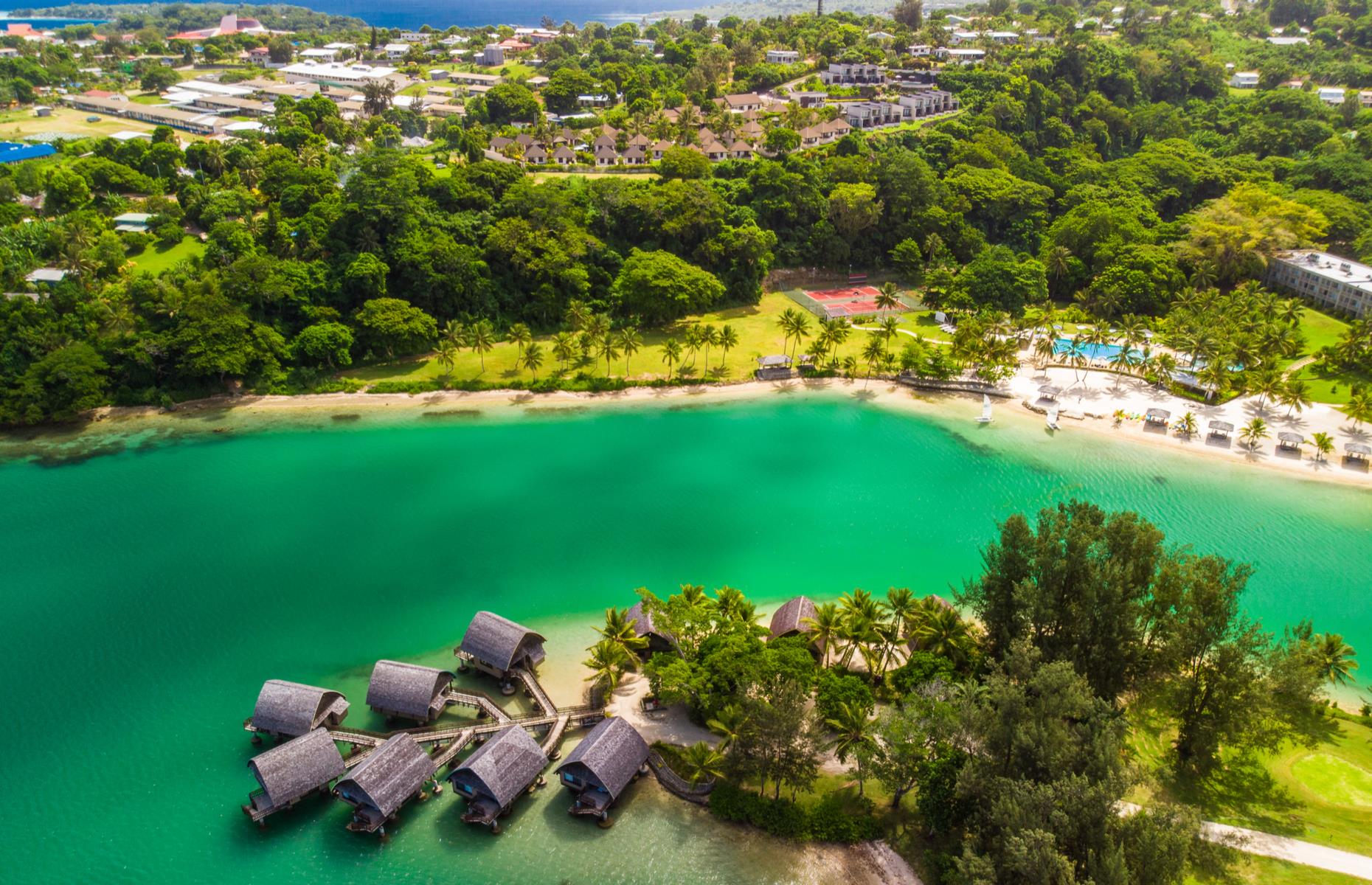
From hiking to the top of an active volcano at Mount Yasur to diving down as far as the depths of the seabed to explore Second World War shipwrecks such as the SS President Coolidge, there’s plenty to explore in Vanuatu. Capital Port Vila (pictured) is a good base for visiting museums, volcanoes and the famously verdant coastline laced with pale-sand beaches.
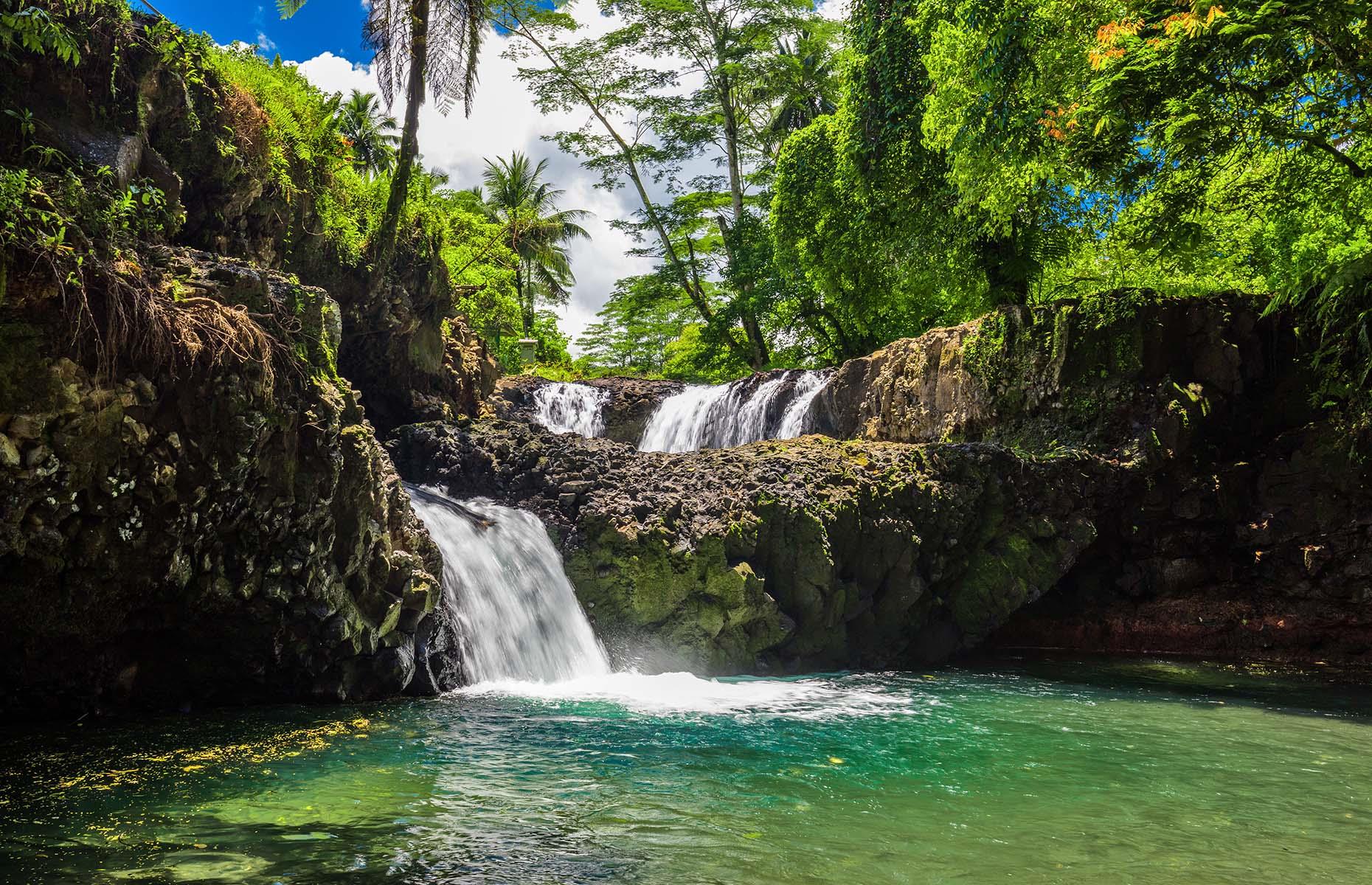
Reset your watch to ‘Tonga time’ when you step off the aeroplane in Fua’amotu International Airport, a half-hour drive from capital Nuku’alofa, gateway to the 170 islands that make up this laid-back Polynesian archipelago. They are split into three groups around Tongatapu in the south, the central region of Ha’apai, and the northern islands of Vava’u, along with a few outlying isles scattered across the sea. Given the distances involved, it’s not surprising that just 22,000 tourists made the journey here in 2022, less than a quarter of the numbers seen before the pandemic.
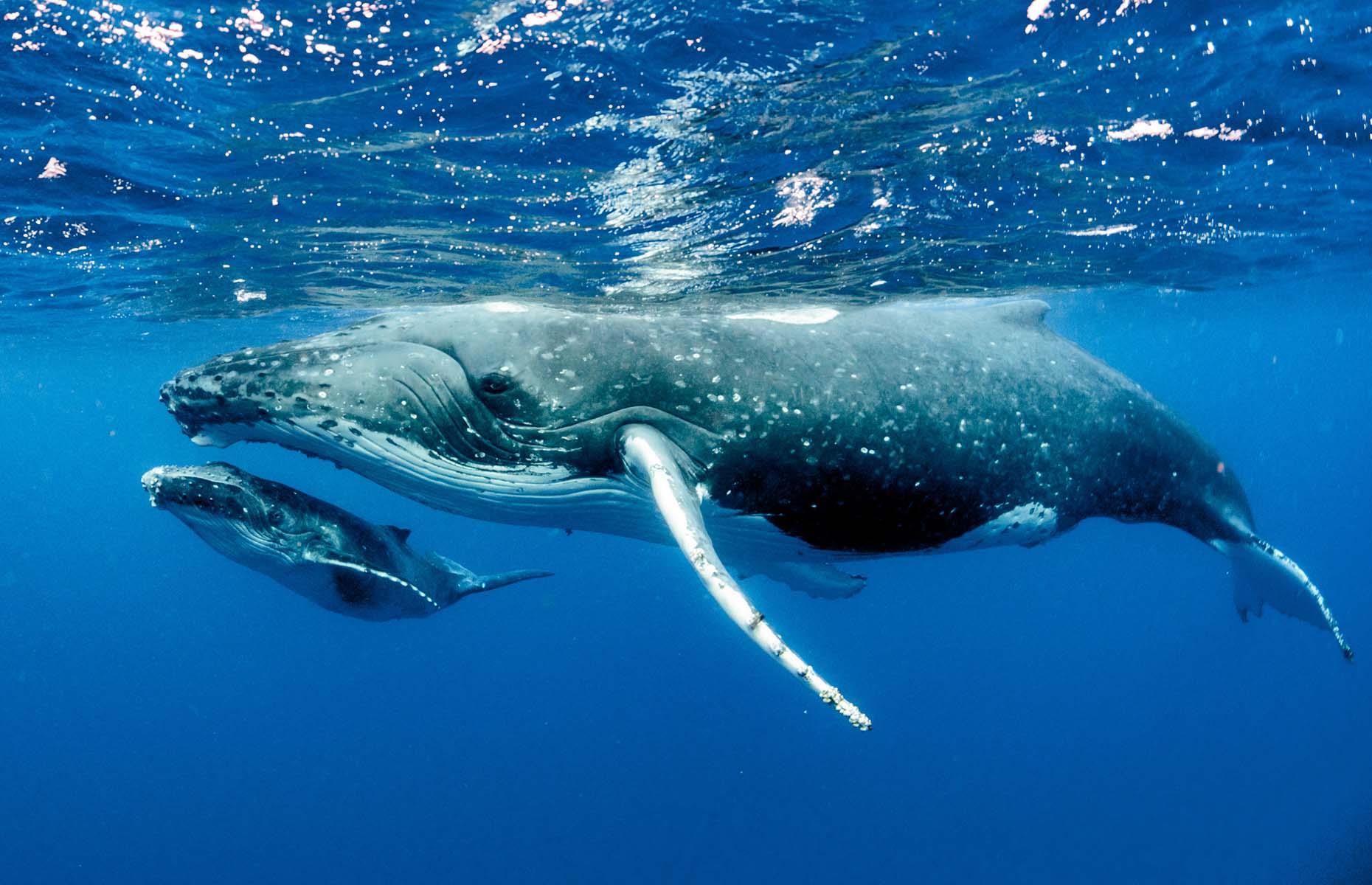
The tiny Himalayan kingdom of Bhutan – which famously measures its domestic wealth based on gross national happiness, rather than purely economic success – has long been a holy grail for adventurous travellers. When it first opened to tourism in 1974, just 274 people crossed its borders but by 2022, that had risen to 21,000 – still tiny by global tourism standards.
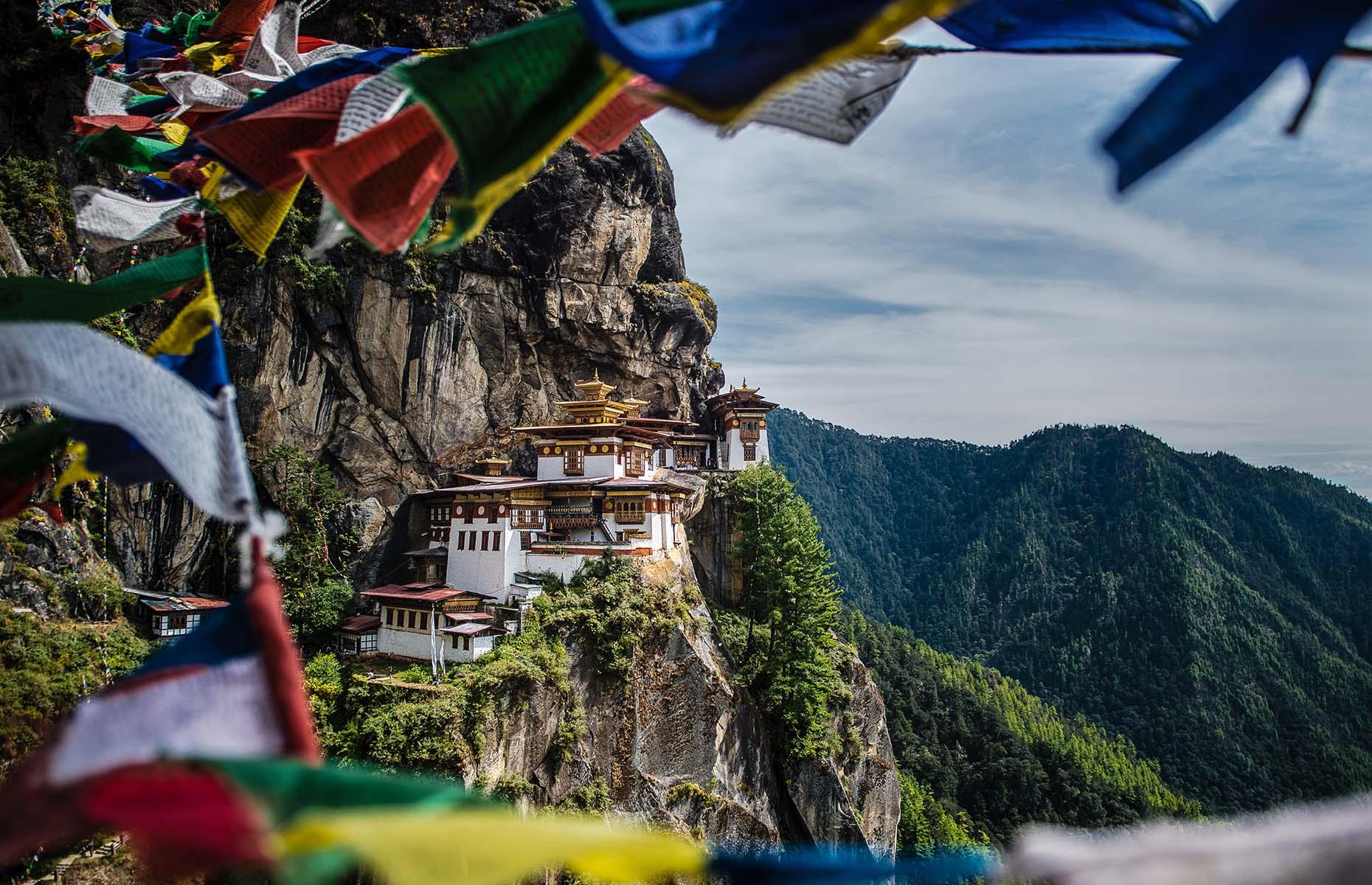
Bhutan is the world’s only carbon-negative country thanks to its vast forests, which cover 70% of the country’s land. It’s a trend-setter in sustainability in other ways too, charging tourists a sustainable development fee – which has fluctuated in price up to $200 (£157) a day, but was reduced to $100 (£79) per day in 2023 – to ensure that landmarks such as the Paro Taktsang (Tiger’s Nest, pictured) monastery and the cross-country Trans-Bhutan Trail can be explored responsibly.

Sao Tome and Principe
The two-island nation of Sao Tome and Principe is Africa’s second-smallest country and has visitor numbers matching its size: just 15,100 in 2021, around half of its typical tourist arrivals. There are flights to Sao Tome from Portugal – from which the country gained independence in 1975 – and then one service a day to even-smaller Principe. It’s renowned as one of the safest spots in west Africa, though its remoteness means accommodation and living costs can be surprisingly expensive.
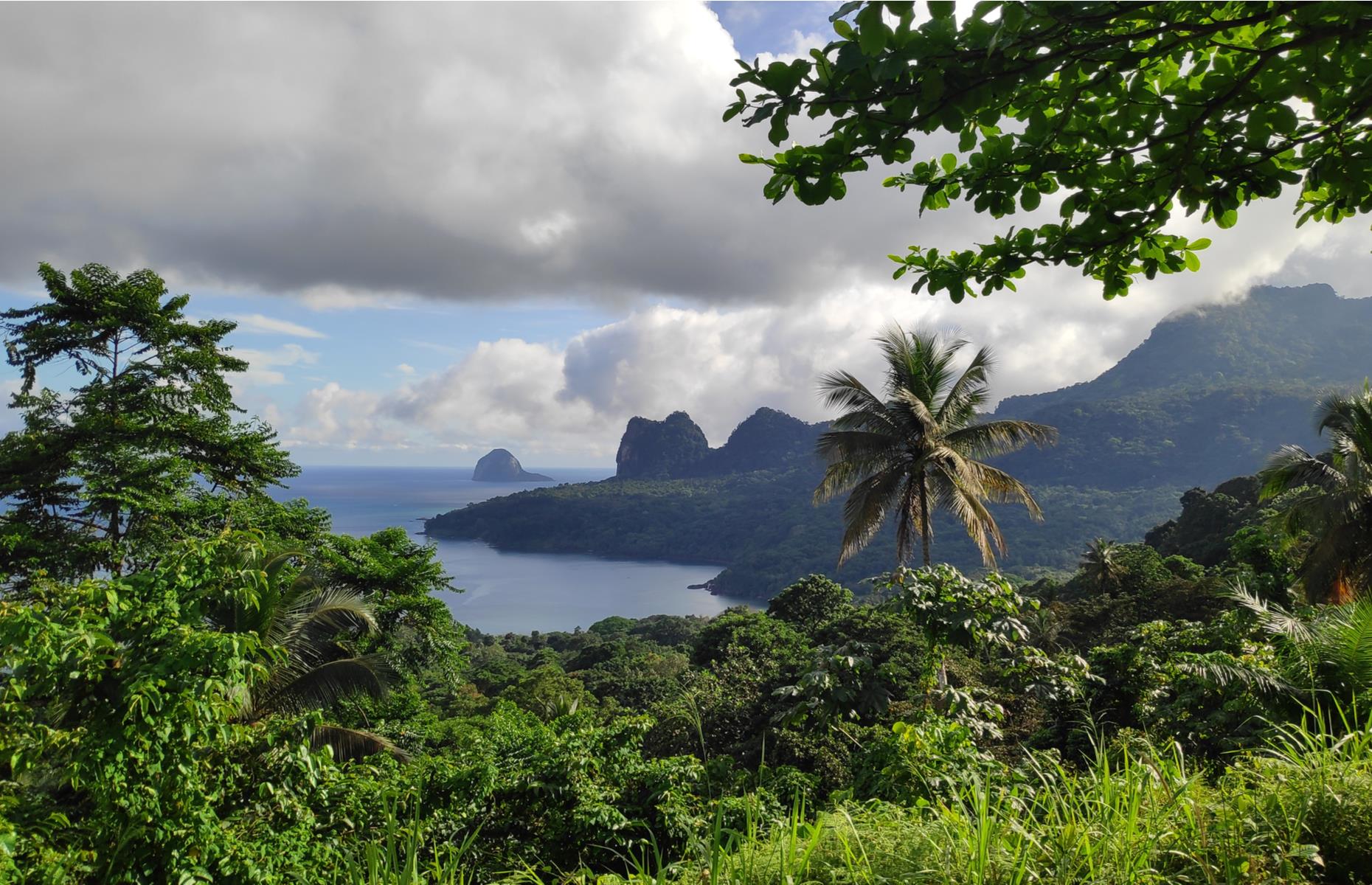
The islands are in West Africa’s Gulf of Guinea and smaller Principe – together with surrounding islets – is a designated UNESCO Biosphere Reserve, home to a rich array of endemic plants and wildlife. Travellers might find rare orchids, reed frogs and vibrantly coloured birds in the tropical and rainforest, interspersed with mountains and volcanic peaks.

North Korea
The world’s most secretive state holds an enduring fascination for many travellers keen to see what life is like behind its doors, even though Western governments including the UK and US advise against all travel due to its political instability. After closing itself off completely to tourism in January 2020, the spring of 2024 saw tourists beginning to trickle back in, meaning the prospect of a return to its pre-pandemic numbers of around 10,000 a year – mainly from China – could be on the cards.
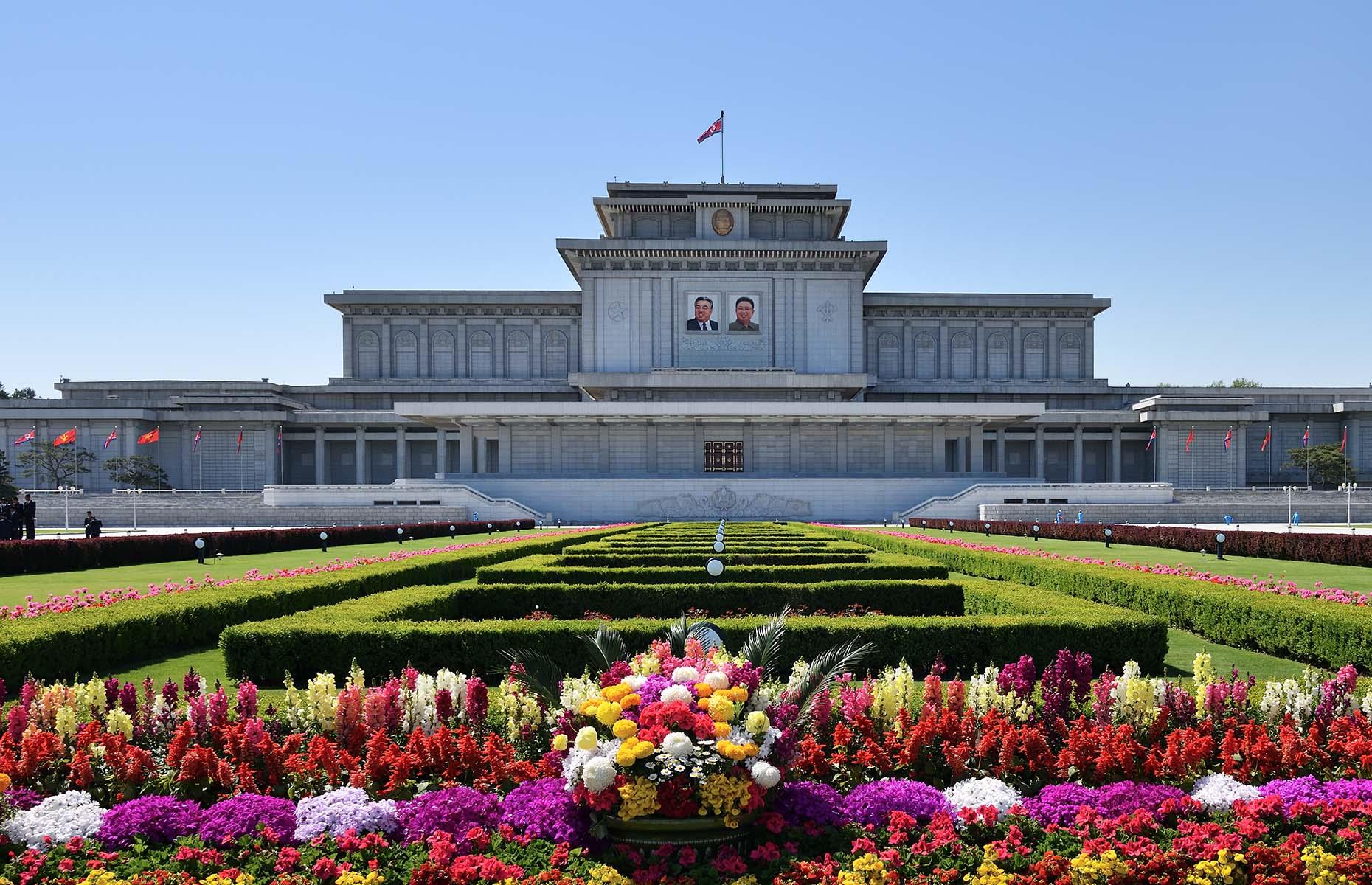
Anyone crossing the border into North Korea must travel on an organised tour and it's worth noting that journalists and travellers with an American or South Korean passport won’t be allowed to enter. Capital Pyongyang is the first stop to explore the state’s take on world events – the Victorious Fatherland Revolutionary Museum offers a different perspective on the Korean War, for instance – while the Kumsusan Memorial Palace (pictured) is a popular pilgrimage for those wishing to pay respect to their former leaders.
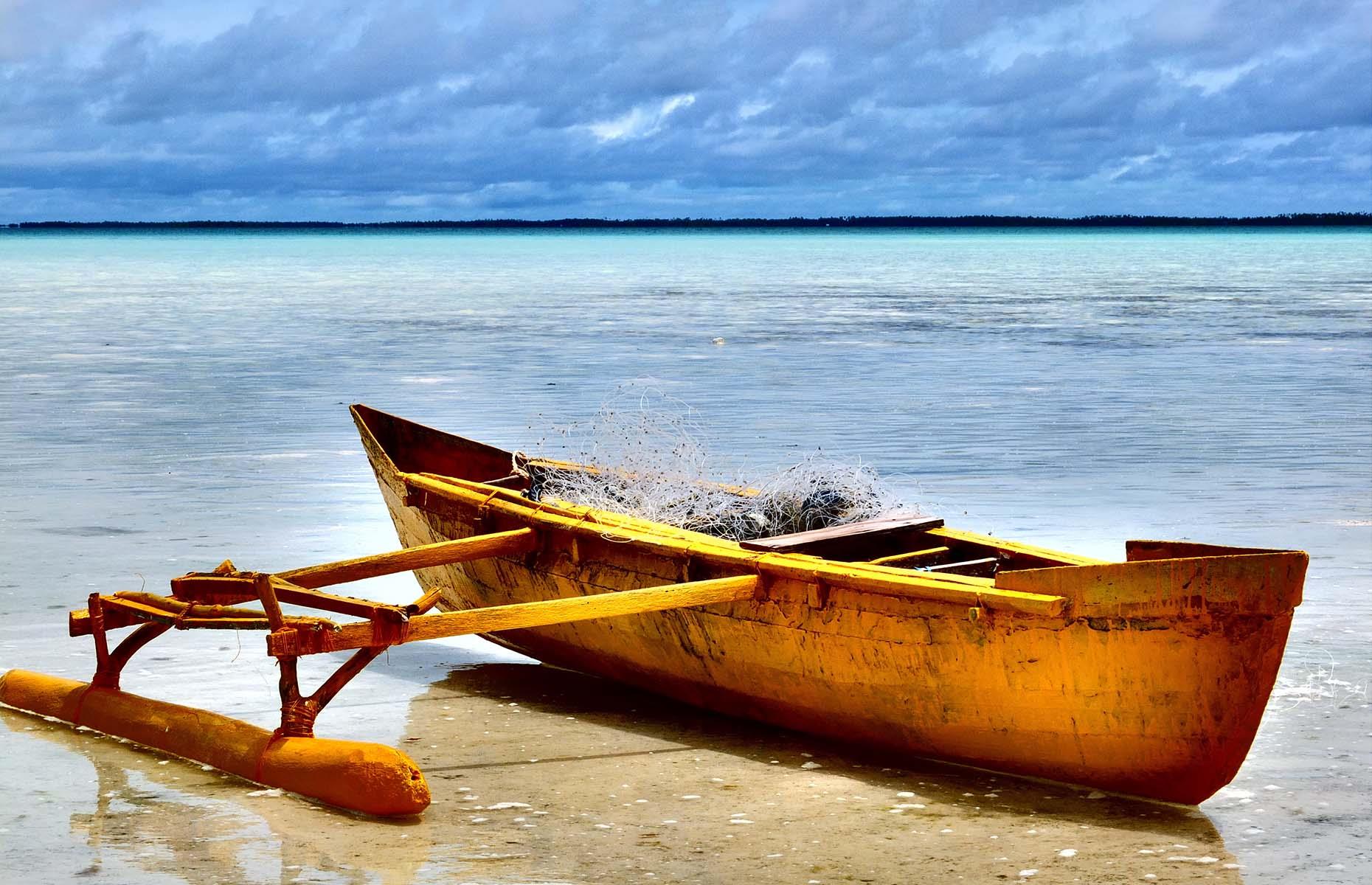
As well as being one of the world’s least-visited countries, Kiribati is also one of its least-developed, with tiny atolls covered in coconut palms, making coconut a significant staple in islanders’ diets along with breadfruit, pandan and giant swamp taro. The archipelago is spread across three main areas: the Gilbert Islands, Phoenix Islands and the Line Islands. Until time zones were adjusted in 1994, these used to span the International Date Line, meaning a 23-hour time difference within the same country.

A teeny number of tourists make it to the tiny country of Nauru – perhaps as low as 200 people per year in recent times, according to The Telegraph , though the figures are so small it’s tricky to verify. It’s unsurprising that it’s so under the radar, because this is the world’s smallest island nation at just eight square miles (21sq km) and the third smallest country overall, after Vatican City and Monaco.
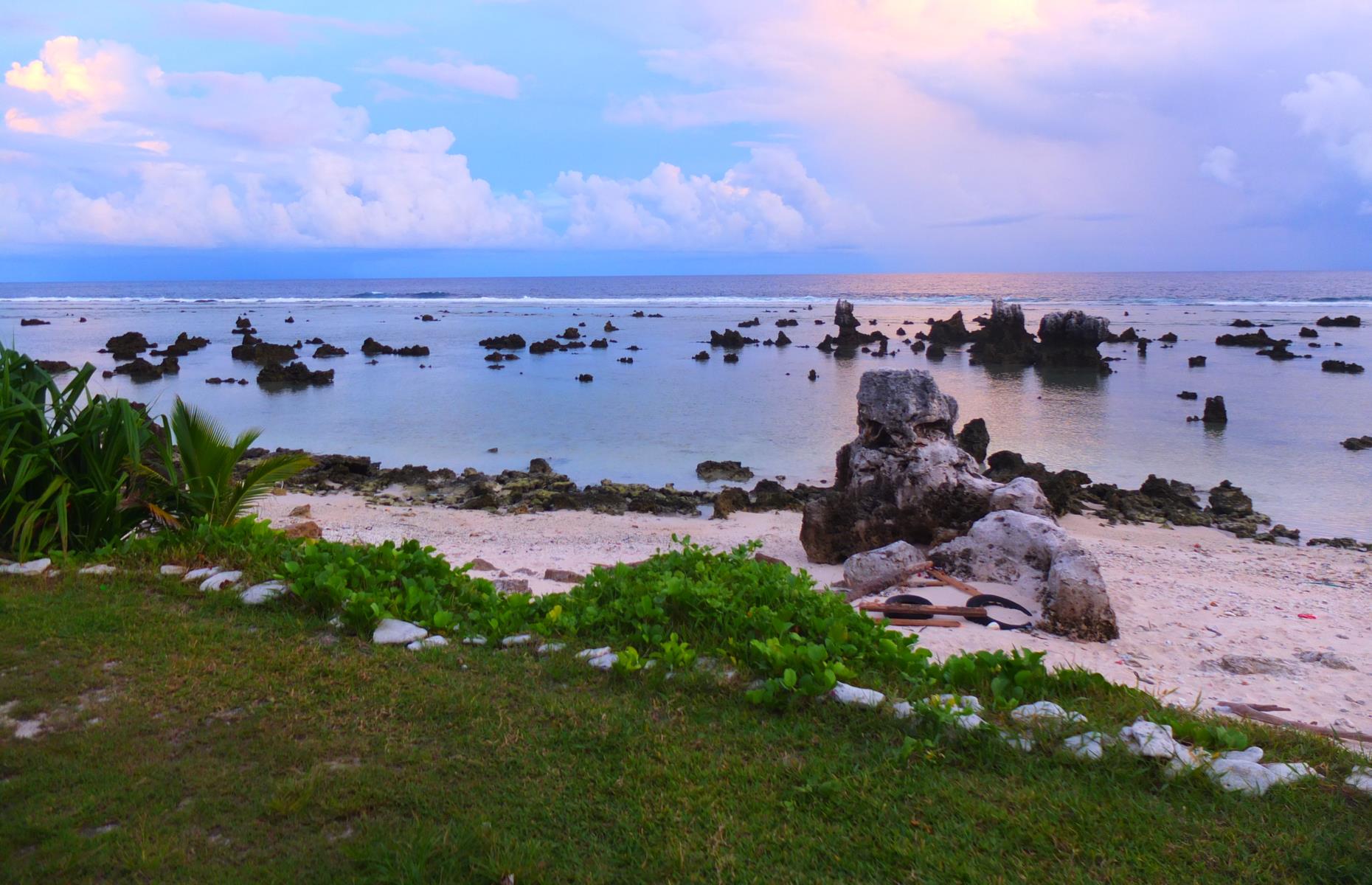
The remote Pacific island nation has been ruled by various countries, finally gaining independence in 1968. The late Queen Elizabeth II is among few who have been, as the Commonwealth member was a stop on her 1982 South Pacific tour. While much of the island centre has been affected by phosphate mining, the coast remains a beguiling mix of white sandy beaches backed by palm trees and ringed by coral reefs.

Officially the world’s least-visited country, the nine-island nation of Tuvalu attracts so few visitors it barely moves the needle on the tourism barometer, with fewer than 1,000 tourists in 2022. It was once united with modern-day Kiribati as former British colony the Gilbert and Ellice Islands, until achieving independence in 1978. Tuvalu is under severe threat from rising sea levels with low-lying islands predicted to be under high-tide levels by 2050, prompting the Australian government to offer sanctuary to climate refugees.
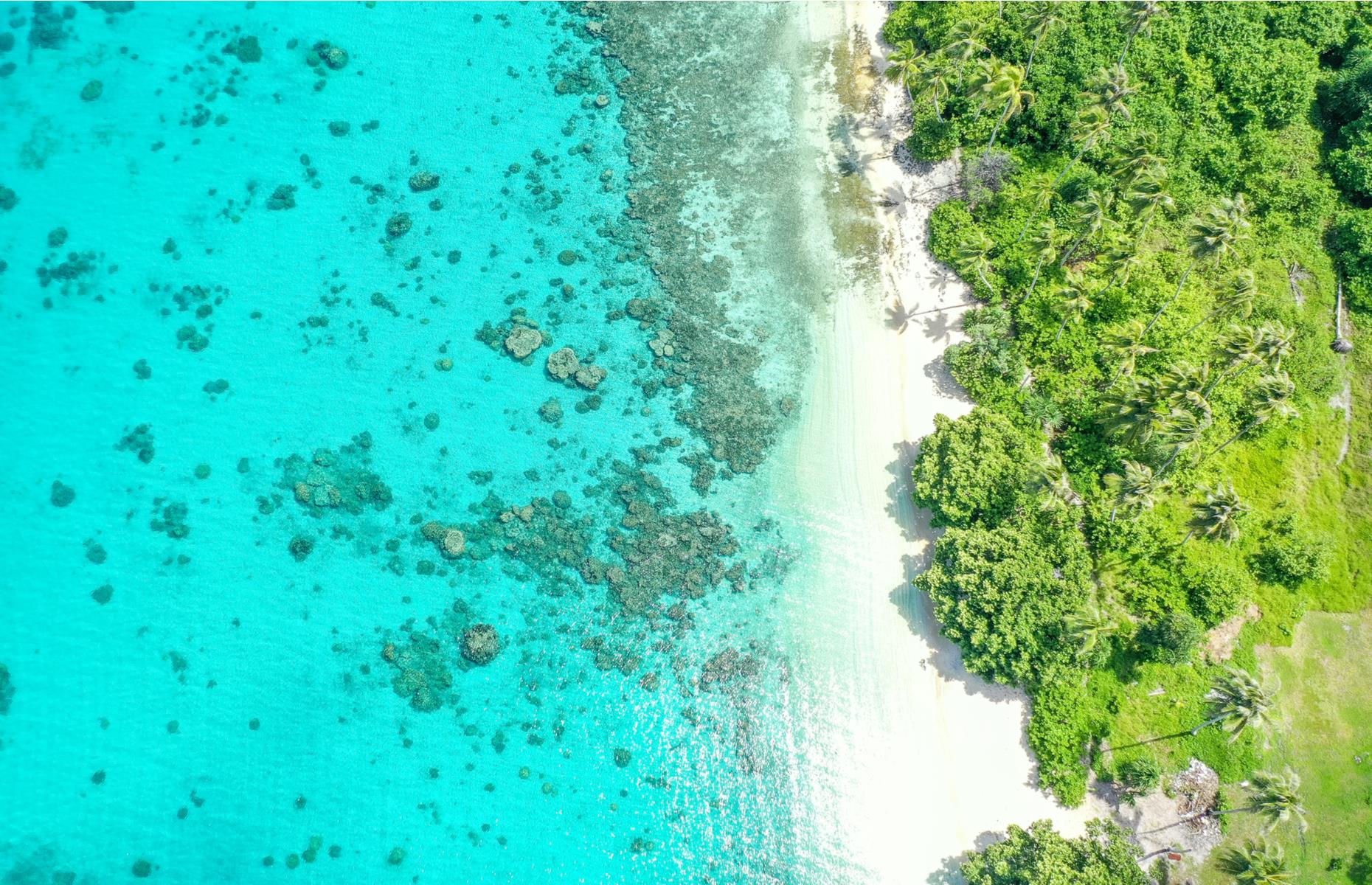
If you’re one of the very few travellers to reach the shores of Tuvalu, you’ll find a network of tiny coral islands spread across a 420-mile (676km) chain in the South Pacific. Visitors can explore the Funafuti Marine Conservation Area, see intriguing Second World War history sites, tour the islands by motorbike or witness traditional cultural ceremonies at the local maneapa (town hall).
Liked this? Click on the Follow button above for more great stories from loveEXPLORING
More for You
Rachel Maddow Says NBC News' Hire Of Ronna McDaniel Was "Inexplicable," Calls For Network To Reverse Decision
Dairy Queen Is Giving Out Free Blizzards in Honor of Their Summer Menu with 3 New Flavors
Ukraine takes out £134,000,000 warship stolen by Putin
Jared Kushner Called to Face the Music
17 Most Stolen Items in the US – What You Should Know
RFK Jr running mate announcement may boost his presidential ballot access bid
The 10 most popular TV shows on Netflix right now
This McDonald's Cult Favorite Menu Item Is Finally Coming Back
Vladimir Putin can be tried for his crimes now
Inside ‘the world’s least-visited country’ – where dirty cars are illegal and social media is banned
Jon Stewart Torches 'Shark Tank's Kevin O'Leary
'Momma can't protect you': Dave Ramsey delivers a blunt message to young adults still living with their parents — 3 things you need to do to get ahead (and get your own place)
This is a 'slap in the face' to Letitia James: Gregg Jarrett
The Cleaning Tip That Will Prevent Brown Recluse Spiders From Invading Your Home
Former Kansas City Chiefs Cheerleader Dies of Sepsis After Stillbirth
Ron Harper, ‘Land of the Lost' and ‘Planet of the Apes' Actor, Dies at 91
The 5 most common deathbed regrets, according to a palliative care nurse
NATO Considering Shooting Down Russian Missiles
Why Timothee Chalamet And Denis Villeneuve Didn't Speak English While Filming Dune
Costco is starting to crack down on a privilege customers love
Thailand Systematic Country Diagnostic Update 2024: Shifting Gears - Toward Sustainable Growth and Inclusive Prosperity
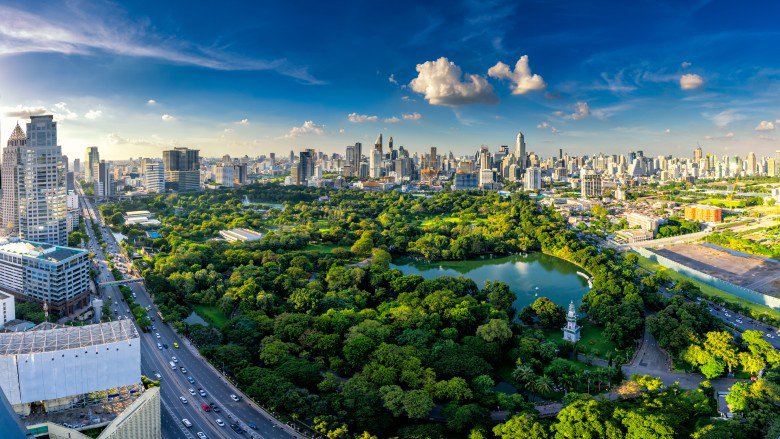
Download SCD Update 2024 | Download Summary
The Thailand 2024 Systematic Country Diagnostic (SCD) Update outlines the World Bank’s assessment of reform priorities for Thailand’s social and economic development. While the Thailand 2016 SCD remains broadly valid, the current global and domestic environments bring new challenges and opportunities. The COVID-19 pandemic, rising geopolitical tensions, rapid technological advancements, and climate change have exerted substantial pressure on the economy, environment, and population.
Despite this, Thailand has managed to uphold macroeconomic and financial stability, demonstrating responsible economic management. Growth gained momentum in 2022 and 2023; nonetheless, Thailand’s recovery trails behind its ASEAN peers, primarily due to its significant exposure to underperforming global tourism and trade. Moreover, the potential for growth is diminishing as the economy grapples with a cycle of reduced investment, slowing productivity, and an aging population. Progress in poverty reduction is slowing, while income and wealth inequality remain high.
The SCD Update identifies five high level outcomes to help Thailand revitalize growth and become a high-income country by 2037, while also fostering a more equitable society and building a sustainable, climate-resilient economy.
What are the key challenges outlined in the Thailand 2024 SCD?
- Inadequate human capital: There are several factors that are preventing Thailand from being an inlusive, skills-based, innovation-driven country. These include poor learning outcomes, an ageing population, and sub-optimal female labor force participation. Vulnerable groups are often excluded from accessing resources such as education, healthcare, economic opportunities and social services.
- An economy that is lagging: Thailand’s productivity growth faces challenges from weak competition and restrictive trade policies in the services sector, hindering business innovation. Dominance by a few large firms and state-owned enterprises further limits competition and efficient resource allocation. Economic progress is hindered by low entry rates for small and medium-sized enterprises, and high household debt.
- Infrastructure and connectivity gaps: Bangkok is a crucial economic driver for Thailand, however, this has resulted in uneven development with secondary cities facing infrastructure challenges due to financial constraints and centralized planning. The country’s land and sea links face challenges that are hampering domestic and regional connectivity. Thailand’s digital potential is hindered by data usage limitations.
- Environmental degradation and climate risks: Thailand is vulnerable to climate change because of its long coastlines, fragile agriculture system, and susceptibility to extreme weather events. These vulnerabilities are compounded by natural resource degradation, air and water pollution and waste mismanagement. Beyond immediate concerns, climate change presents substantial long-term macroeconomic implications and social costs that include the loss of lives, food insecurity, and declines in human capital.
- Weak institutions: Thailand’s institutions need to be reformed to achieve strong, inclusive, and sustainable growth. Fiscal rules and investment bottlenecks are undermining the efficiency of public investment. There are also gaps in accountability and transparency which hinder institutional progress. Institutional reform is a crosscutting ambition, which would allow Thailand to effectively address other socioeconomic challenges.
Five High Level Outcomes for Thailand’s social and economic development
This site uses cookies to optimize functionality and give you the best possible experience. If you continue to navigate this website beyond this page, cookies will be placed on your browser. To learn more about cookies, click here .

IMAGES
COMMENTS
1. Independent travel is finally possible, but a tour operator is still the way to go. Since reopening in 2022, Bhutan has scrapped its all-inclusive tour-package minimum, and initially raised the Sustainable Daily Fee (SDF) to US$200 before reducing it to US$100, valid now through September 2027.There is a 50% discount for kids ages six to 11, with no SDF for those under six.
Tourism in Bhutan began in 1974 when western Bhutan was opened up to international visitors for the first time. Bhutan's tourism has undergone a transformation since the 1990s. In ... The TCB officially permits domestic tourism through a notification a few days ago. Domestic tourism activities will be allowed with adherence to health and ...
Publication of the Tourism Council of Bhutan Tourism Council of Bhutan P.O.Box 126, GPO Thimphu, Bhutan Tel: +975 - 2 - 323251 / 323252 Fax: +975 - 2 - 343695 Email: [email protected] ... Domestic Tourism: Domestic tourism comprises of activities of a resident visitor within the country
uieies or te emet o Domestic Tourism 2020 Tourism Couci o but | 7 ChapTer 3 Requirements and Minimum Services Requirements 3. All tours shall be conducted as required under this chapter. 4. Service providers as defined in the guidelines shall be licensed and registered with the Tourism Council of Bhutan to conduct domestic tourism activities. 5.
While Bhutan remains closed to international tourists owing to the Covid-19 pandemic, there is a renewed effort in promoting domestic tourism led by the Tourism Council of Bhutan (TCB). Previous efforts to tap on the domestic tourism potential could not reap the desired outcome.
Bhutan's tourism mantra has long been "high value, low impact," and its aim is simple: to maximize the financial benefits of tourism while minimizing its environmental and cultural impact. It's a perfect example of the country's guiding policy of "Gross National Happiness.". The country kept its doors locked tight during the Covid ...
COVID-19 and Tourism in Bhutan. Impact of the pandemic. Response. Annual Report 2020-2021 Tourism Council of Bhutan 7 COVID-19 and Tourism in Bhutan Impact of the pandemic The impact of COVID-19 on the tourism sector has been overwhelming. Arrivals dropped by 91 percent from 315,599 visitors in 2019 to 29,812 visitors in 2020.
Bhutan 's tourism policy was further revised in June 2022 to maintain its 'High Value, Low Volume' policy and all nationalities had to pay US $200 as a Sustainable Development Fee [7] per night to obtain a visa to Bhutan, while Indian nationals have to pay 1,200 INR to obtain a permit. Starting from August 2023, the SDF decreased to $100, while ...
Agencies' lack of interest has hampered domestic tourism. Another factor affecting domestic tourism is the lack of accessibility to smaller regions. In order to explore the entirety of Bhutan, agencies must be able to easily bring Bhutanese residents to towns other than the most well-known and popular ones.
In fact, domestic tourism is an important component of the ongoing tourism flagship program and it is also featured in the draft tourism policy that is waiting to be approved within this month. The Tourism Council of Bhutan (TCB) in their effort to promote and encourage domestic tourism during the pandemic have sought expression of interest to ...
Tourism revenue is a key contributor to Bhutan's economy, making up 6 percent of the country's gross domestic product. Some 29,000 tourists visited Bhutan in 2020 before the borders were ...
In 1972, the fourth king of Bhutan proclaimed: "Gross National Happiness (GNH) is more important than Gross Domestic Product (GDP)." Today, all government policies - including their tourism policy - are evaluated on their impact on a GNH index that includes measures of good governance, sustainable socio-economic development, cultural ...
The USD 4.854 million ecotourism project will mainstream biodiversity conservation into the tourism development and position Bhutan as "a model ecotourism destination". The project is timely and comes at a time when Bhutan rethinks tourism in the wake of COVID-19 and the tourism sector, hit hard by the pandemic, strives to make a comeback ...
The Tourism Council of Bhutan is pleased to announce the Tourism Policy of the Kingdom of Bhutan 2021. The policy envisions to promote Bhutan as a green, sustainable, inclusive, and a high-value tourism destination guided by the policy of 'High-value, Low volume' tourism to contribute to the overall socioeconomic development of the country.
Domestic tourism is now beginning in earnest. Had Bhutan worked on developing domestic tourism since the country decided to open its door to the world in the early 1970s, the advent of Covid-19 would not have rendered a large number of Bhutanese, especially youth, jobless. The many sectors that are crippled by the pandemic would have been ...
Bhutan Tourism Monitor 2020 7 FOREWORD The Tourism Council of Bhutan is pleased to present the annual statistical publication 'Bhutan Tourism Monitor 2020'. This publication presents the overall performance of tourism for the year including data on market trends, findings and analysis to support future development of the tourism industry.
Bhutan; Domestic tourism gives hope to tour agents in Bhutan Domestic tourism gives hope to tour agents in Bhutan . While the pandemic shut down the travel industry this year, local travellers look for ways to revamp their businesses through camping, glamping and Nyekor. Oct 17, 2020 ...
The COVID-19 pandemic has had a significant impact on tourism in Bhutan. The country, known for its unique approach to tourism based on the concept. 0. ... Shift to domestic tourism: With international visitors no longer allowed, the focus shifted to promoting domestic tourism. The government encouraged Bhutanese citizens to explore their own ...
For instance, the Royal Government of Bhutan developed an ecotourism project by encouraging homestays to offer tourists a chance to stay in a traditional Bhutanese home and boost domestic tourism. Thus, Bhutan's commitment to environmental sustainability is guided by GNH which indicates a strong relationship between the environment and the ...
The Tourism Council of Bhutan (TCB) launched "Mainstreaming Biodiversity Conservation into the Tourism Sector in Bhutan", a new project with the beginning of a three-day inception workshop in Trashigang on September 27. ... boosting domestic tourism, creating employment opportunities and increasing community resilience and connection to ...
Bhutan trip November 2019 Visited Bhutan a week back via WOW club and tour operator from Bhutan were Heavenly Bhutan... Travels. I must says it was one of the memorable trip. All credits of this amazing trip to our guide RinChen and driver Tik. They both were very well organised and had immense knowledge of all the places we visited.
Bhutan's commitment to preserving its cultural heritage and pristine environment makes it a truly unique destination. Bhutan's policy of high-value, low-impact tourism translates into a meaningful ...
The tiny Himalayan kingdom of Bhutan - which famously measures its domestic wealth based on gross national happiness, rather than purely economic success - has long been a holy grail for ...
The Thailand 2024 Systematic Country Diagnostic (SCD) Update outlines the World Bank's assessment of reform priorities for Thailand's social and economic development. While the Thailand 2016 SCD remains broadly valid, the current global and domestic environments bring new challenges and opportunities.